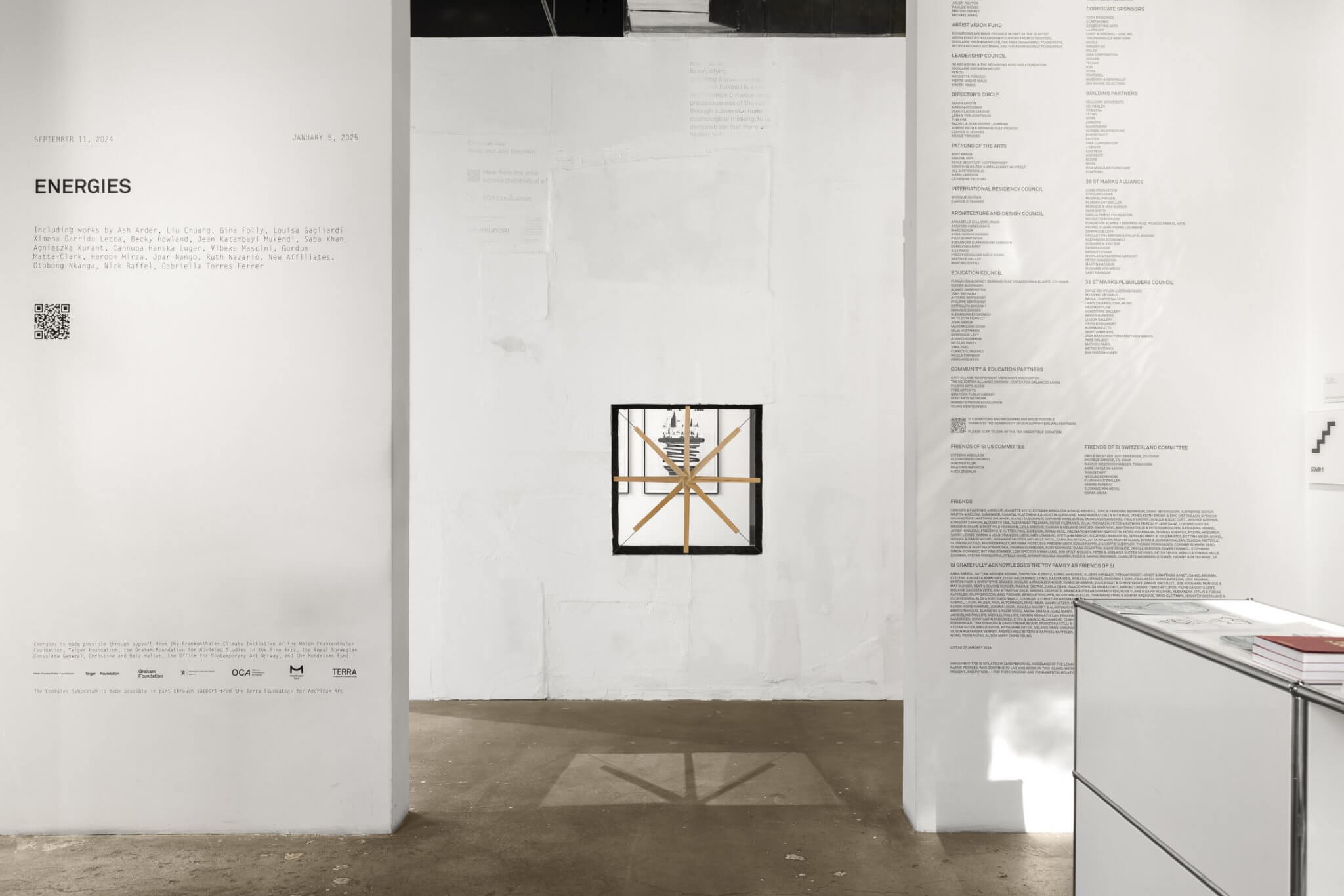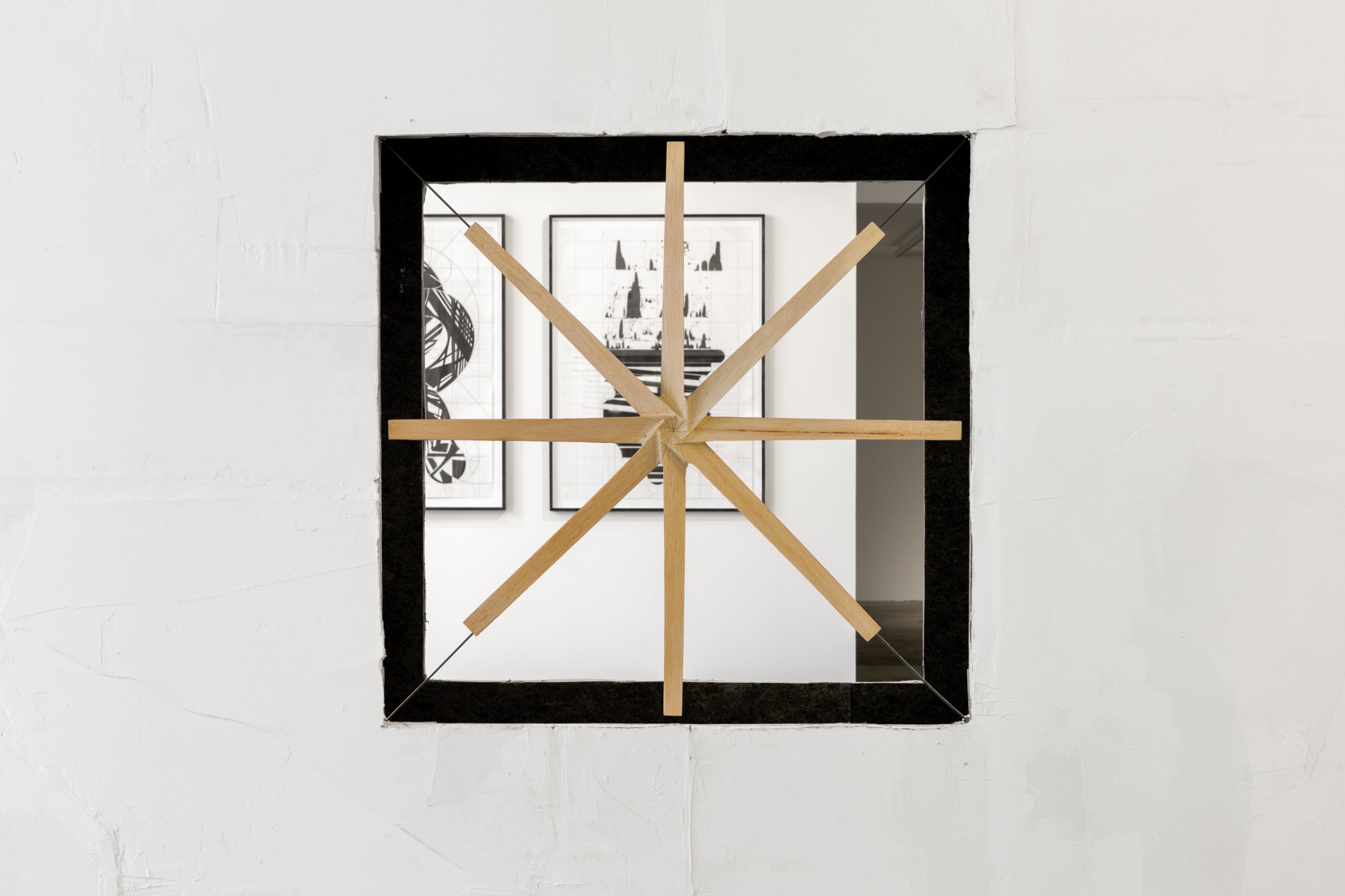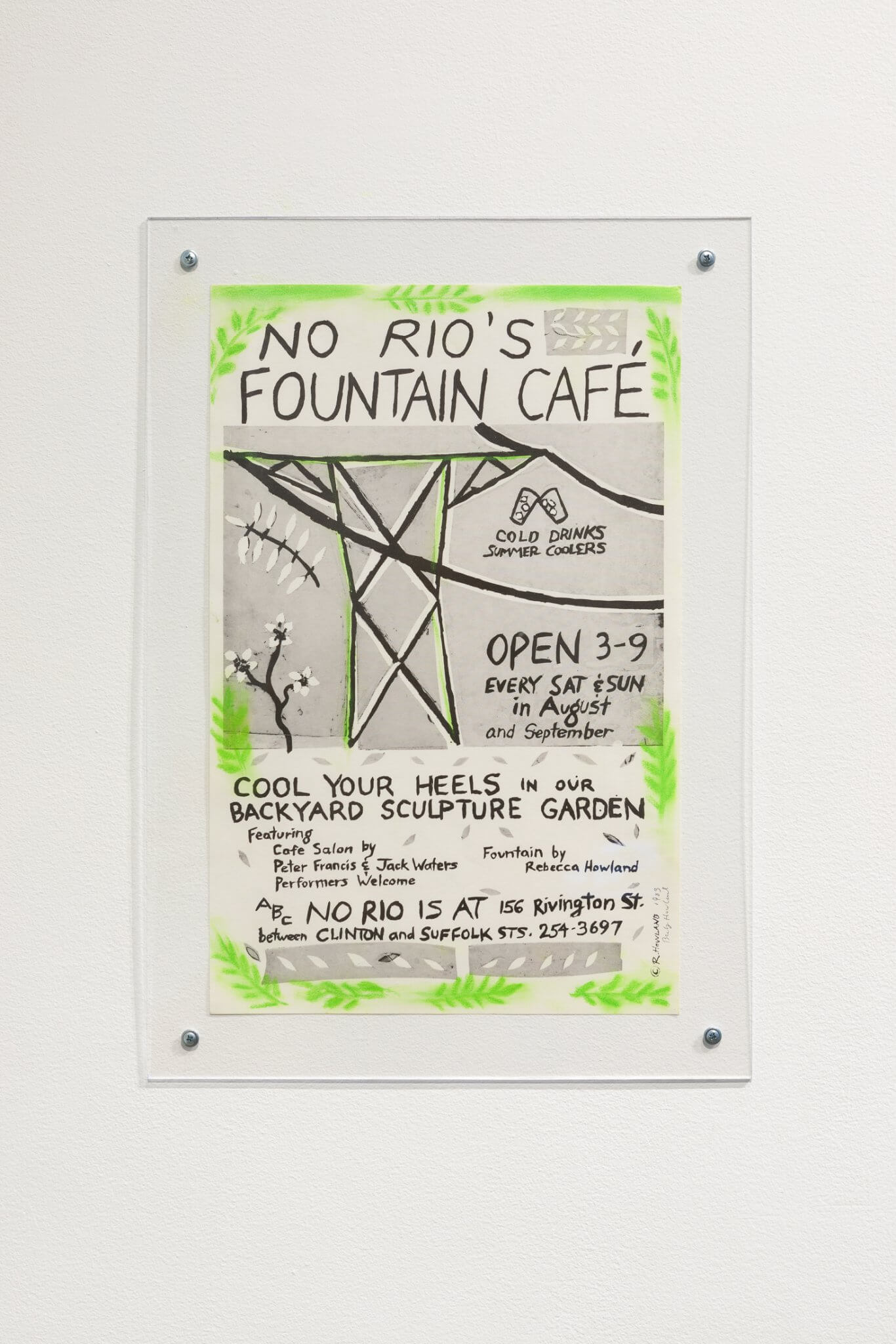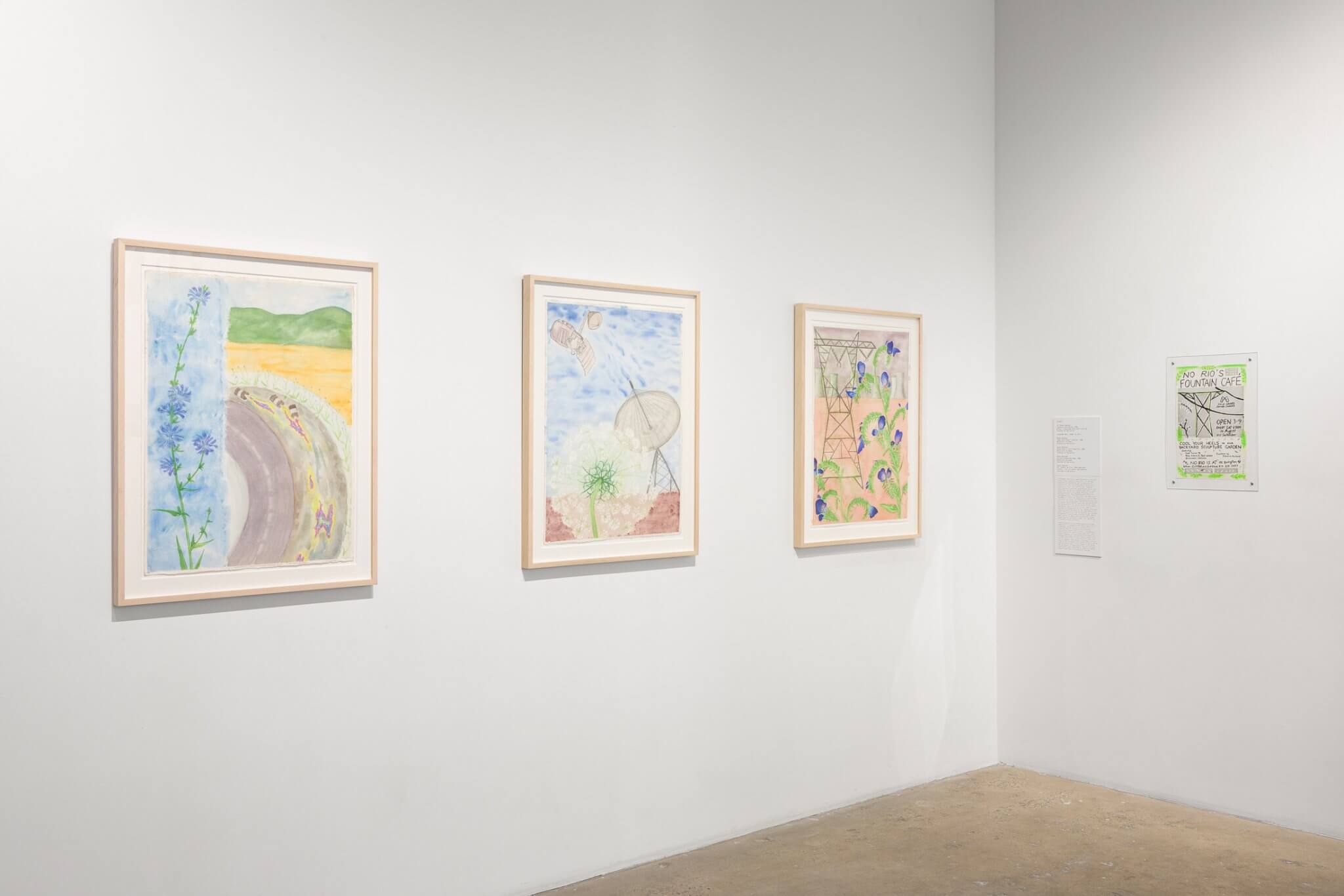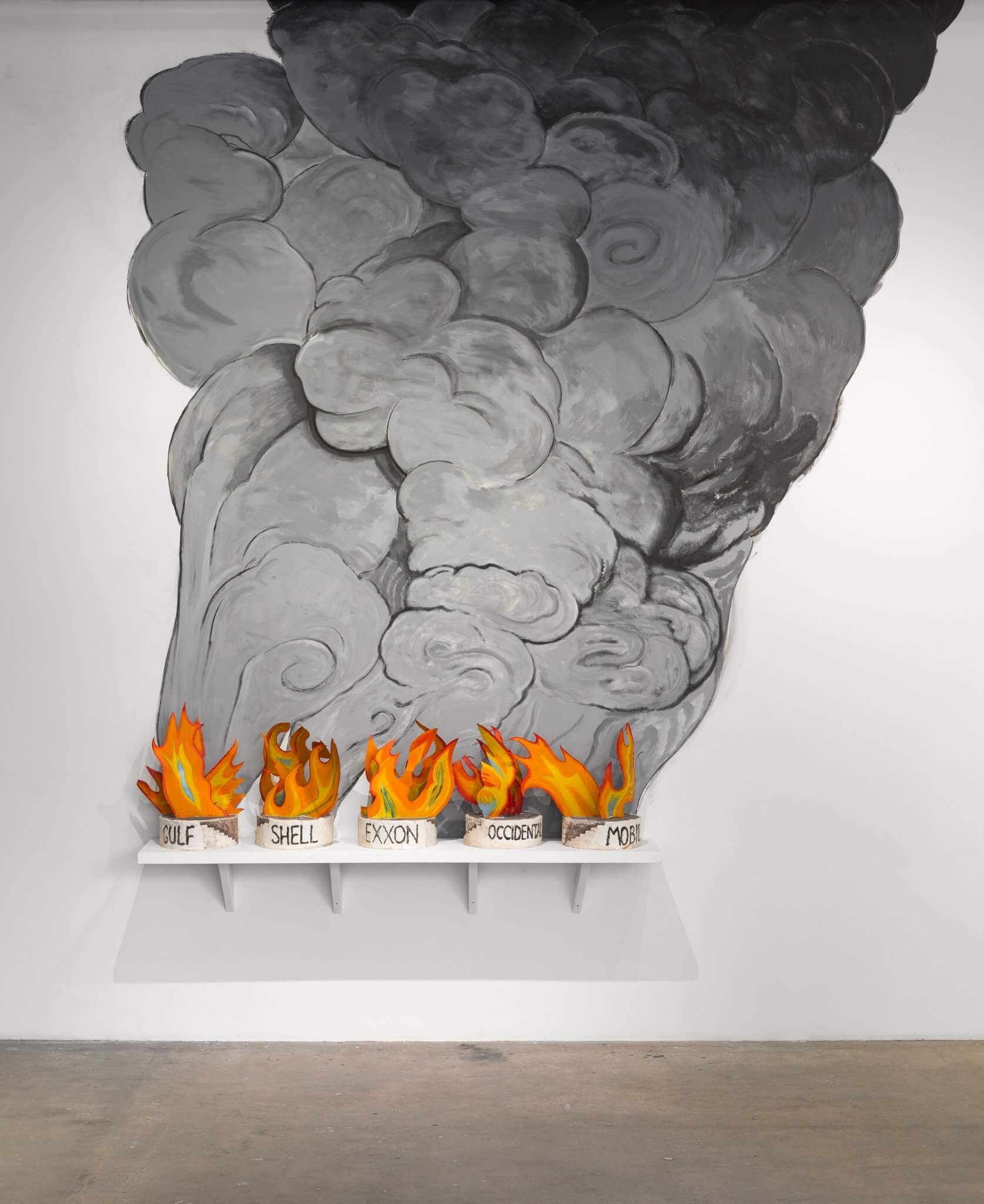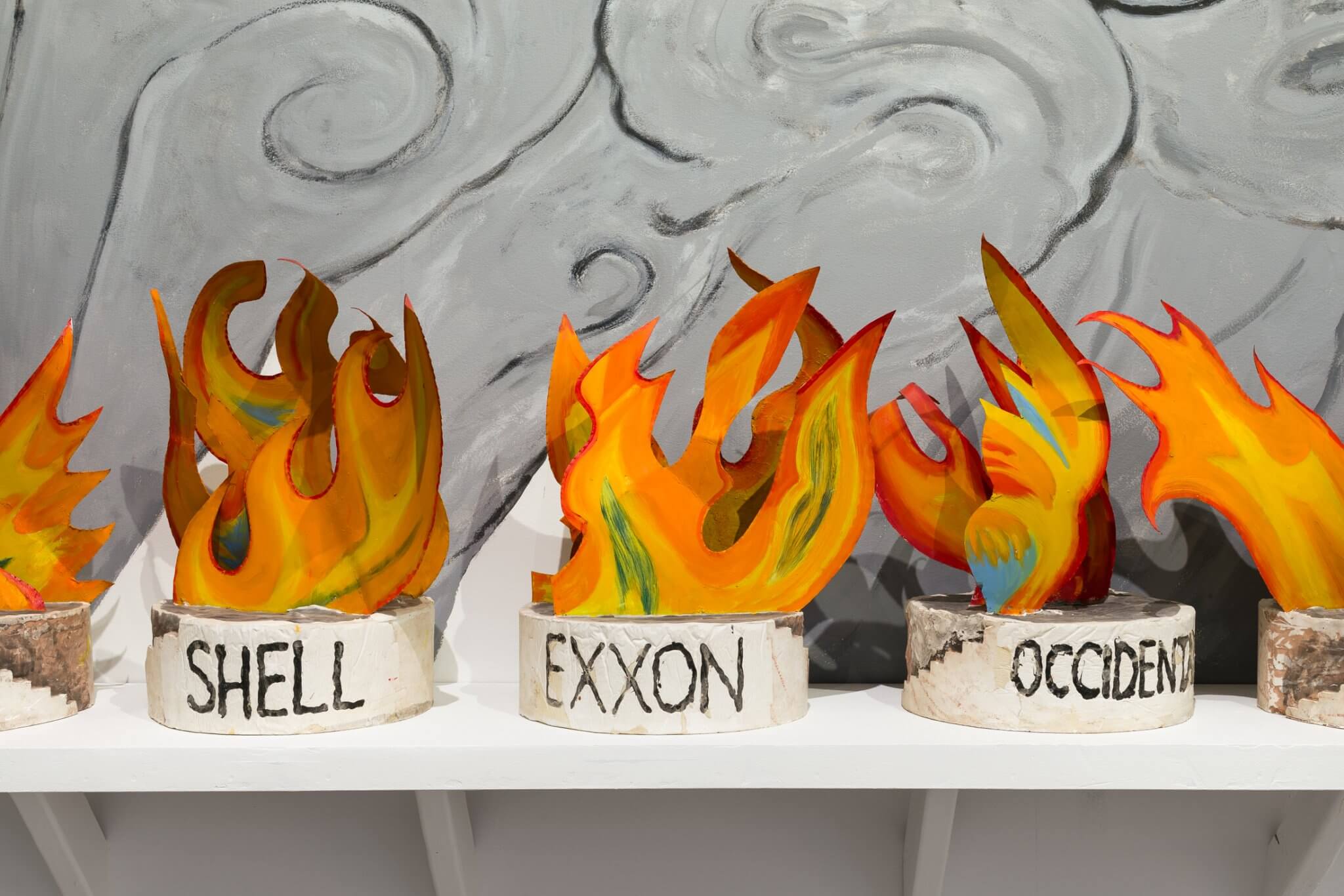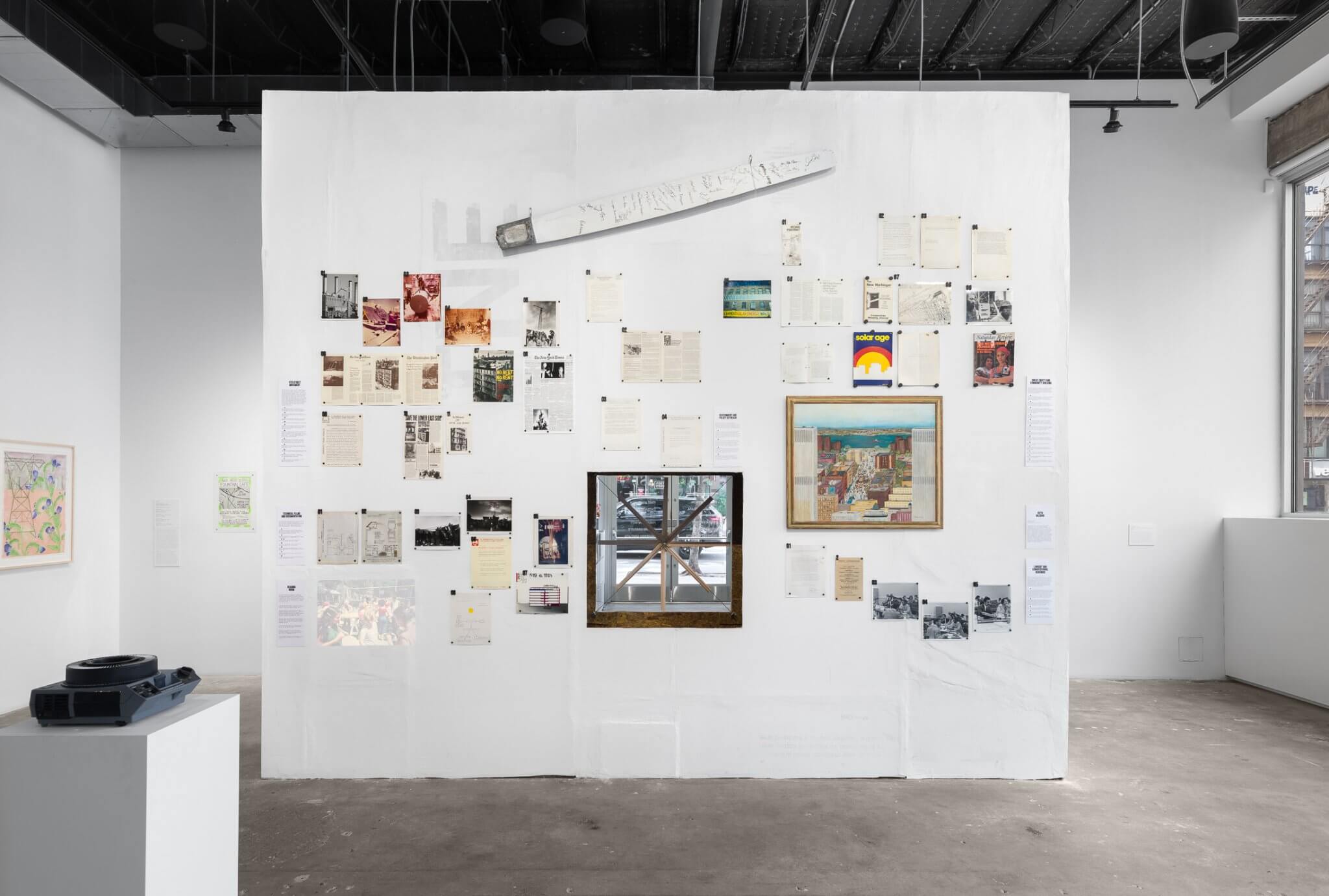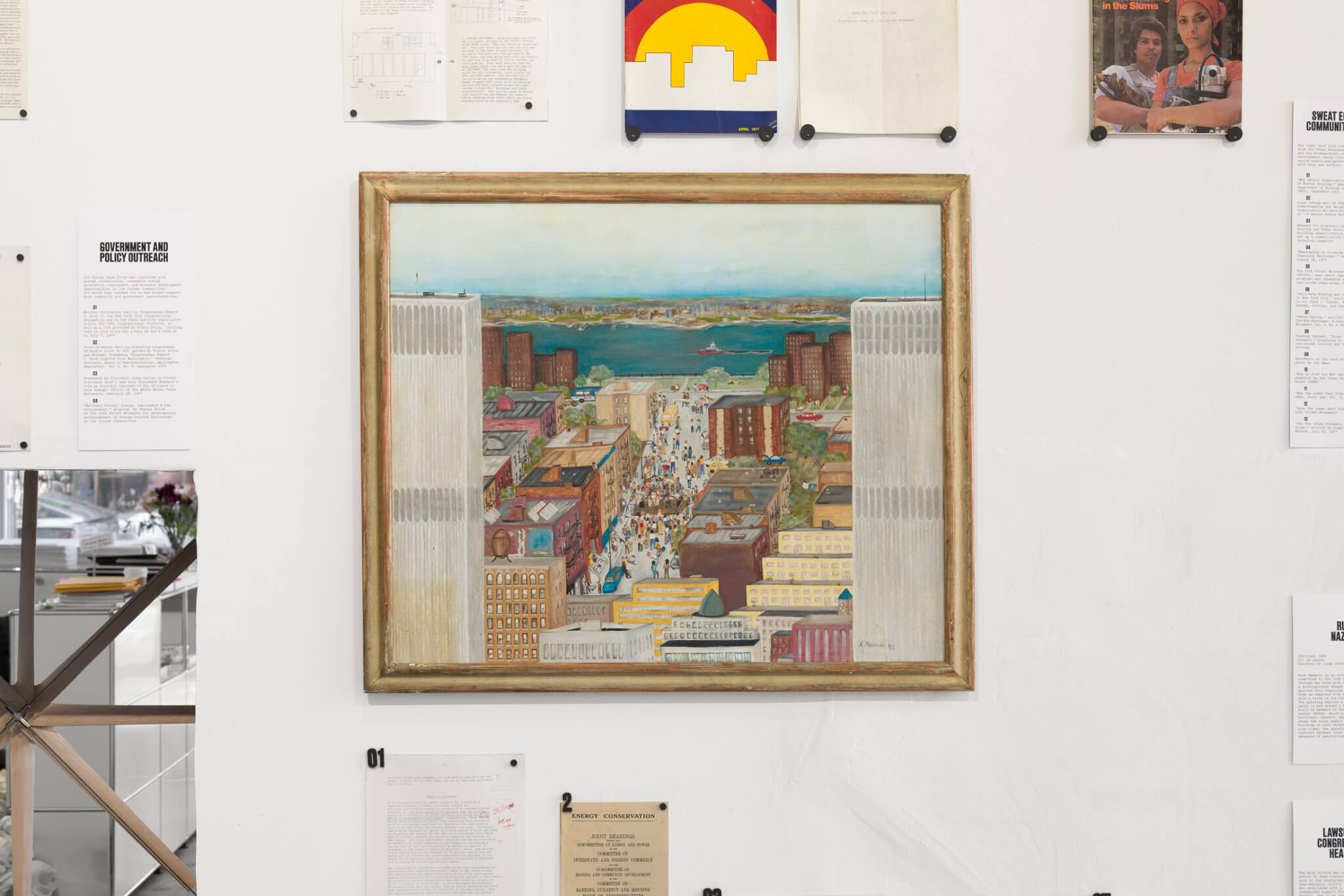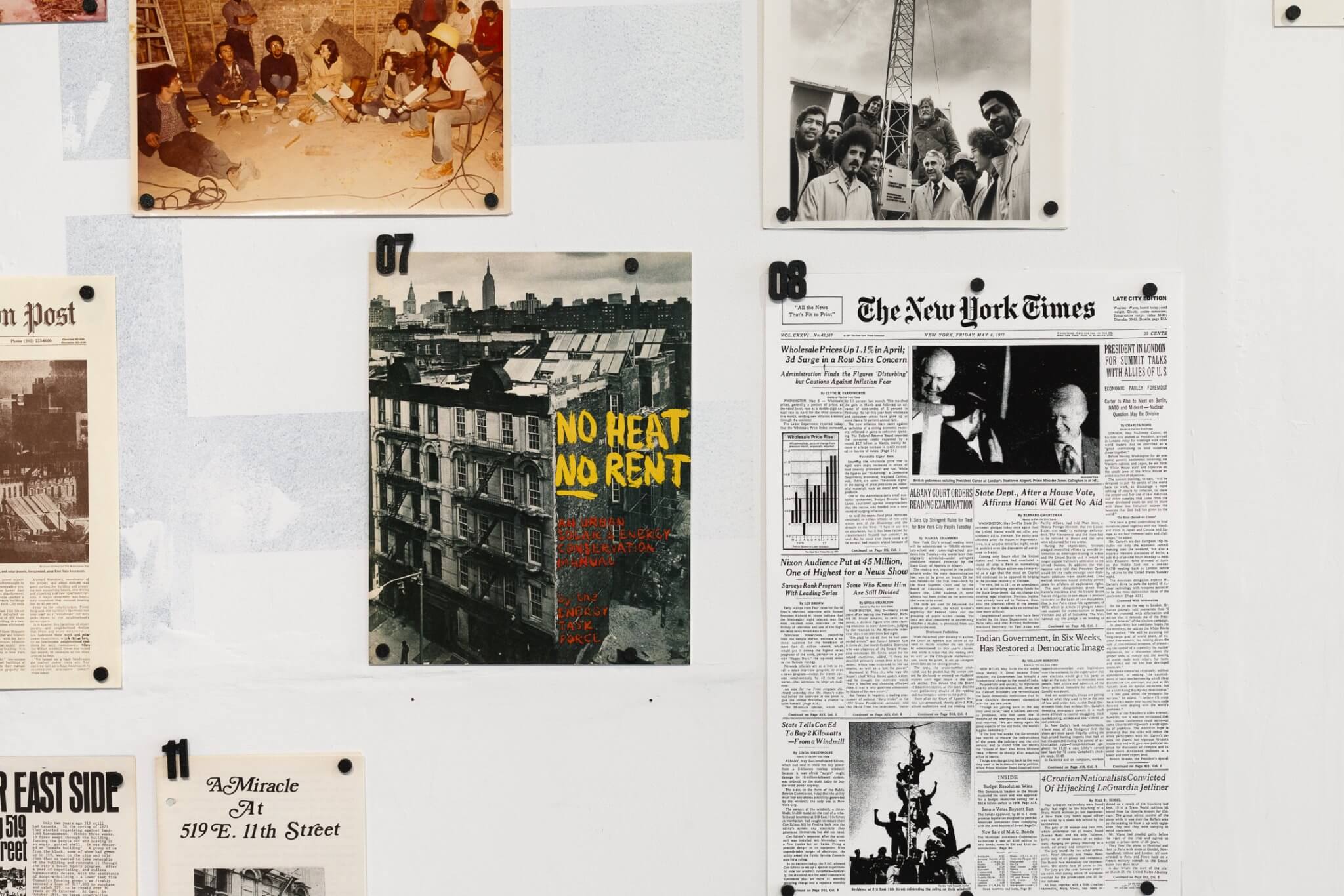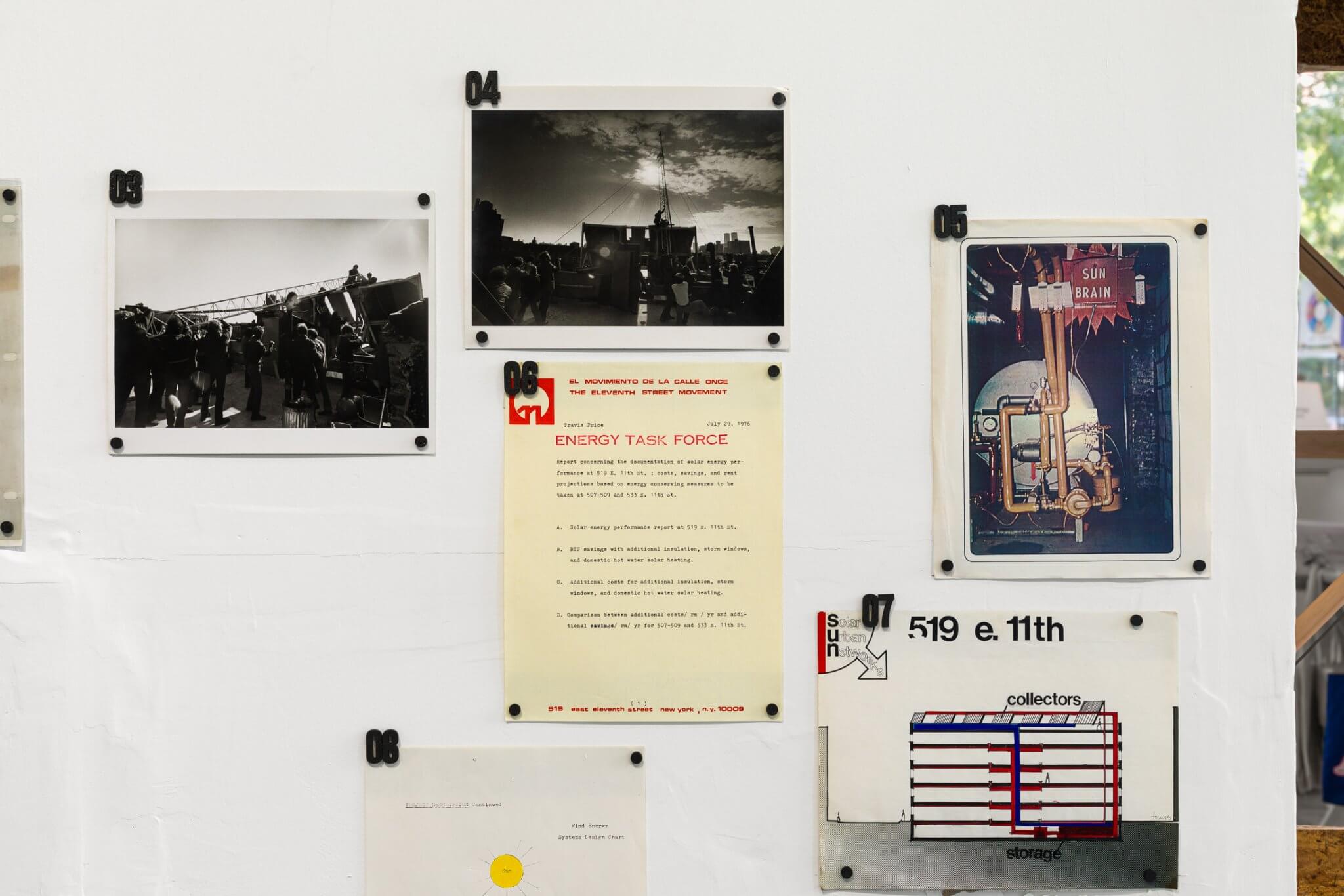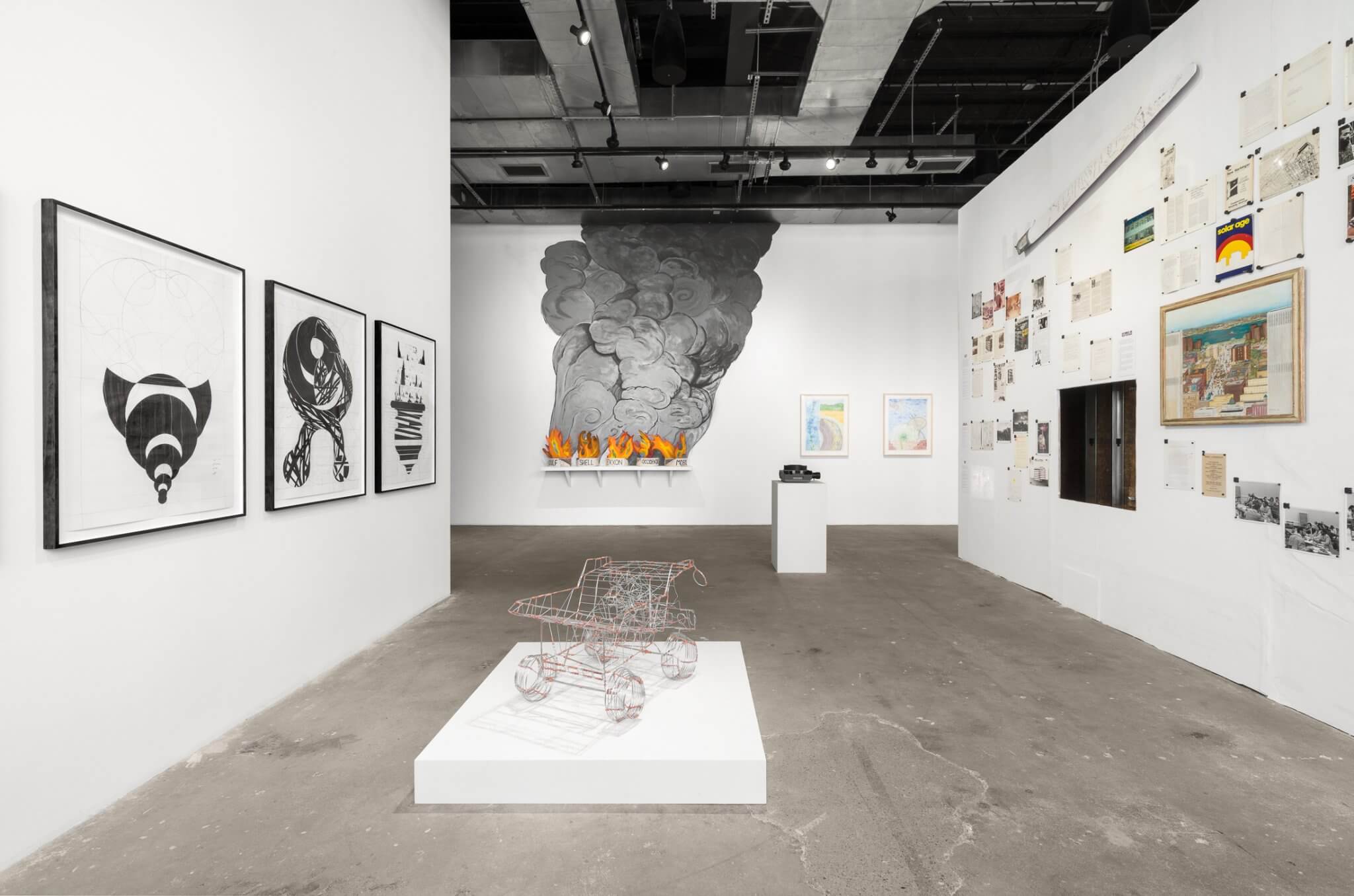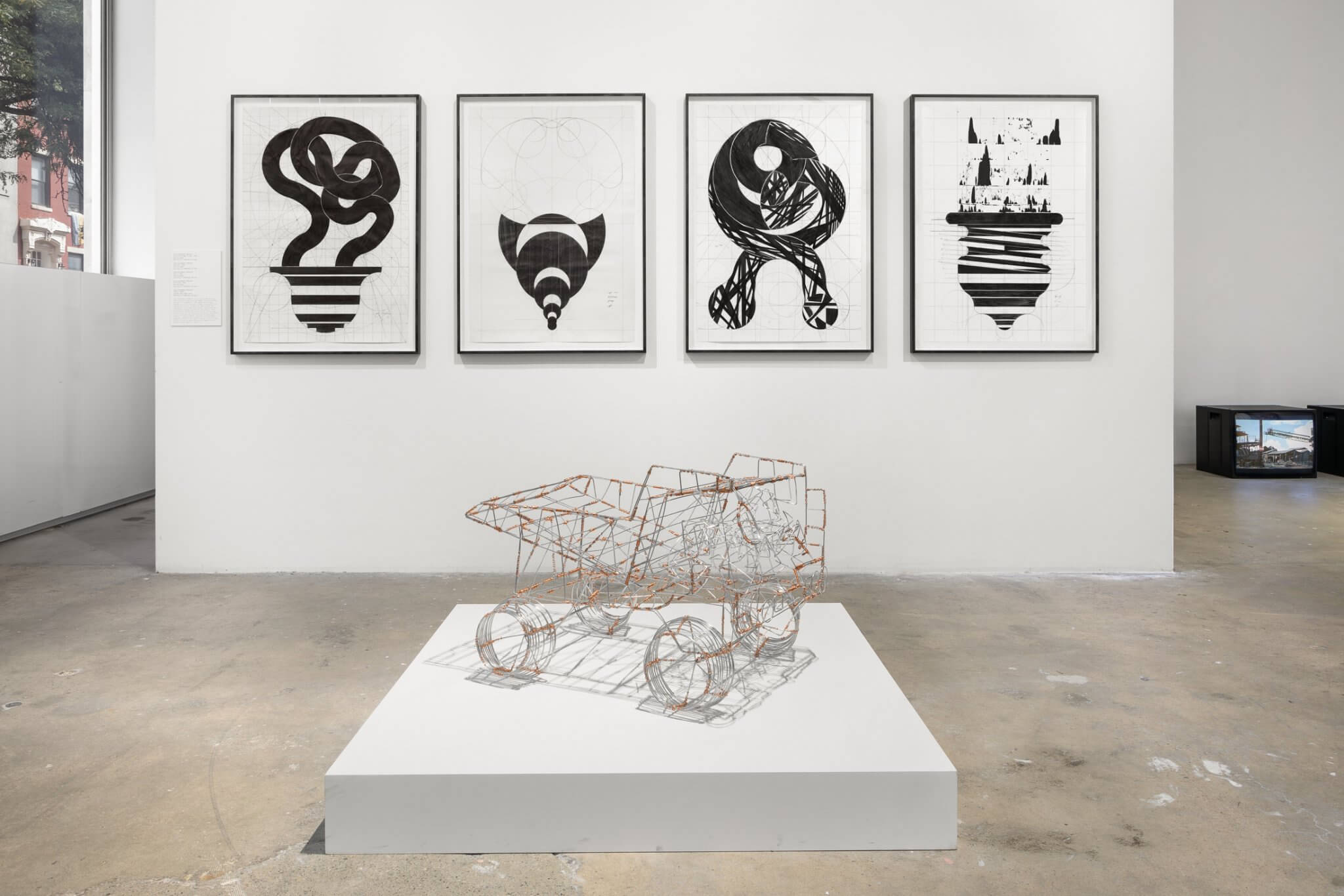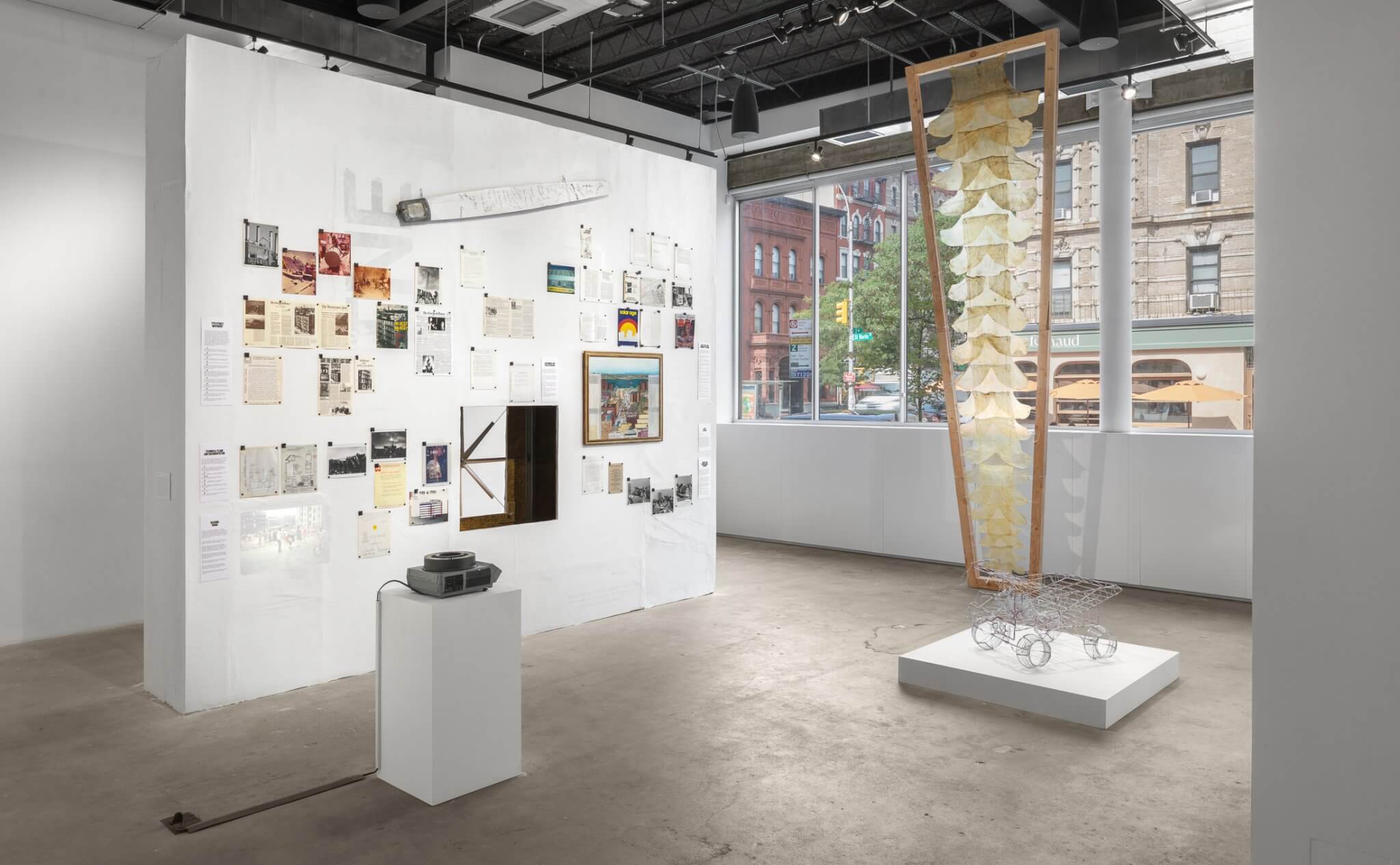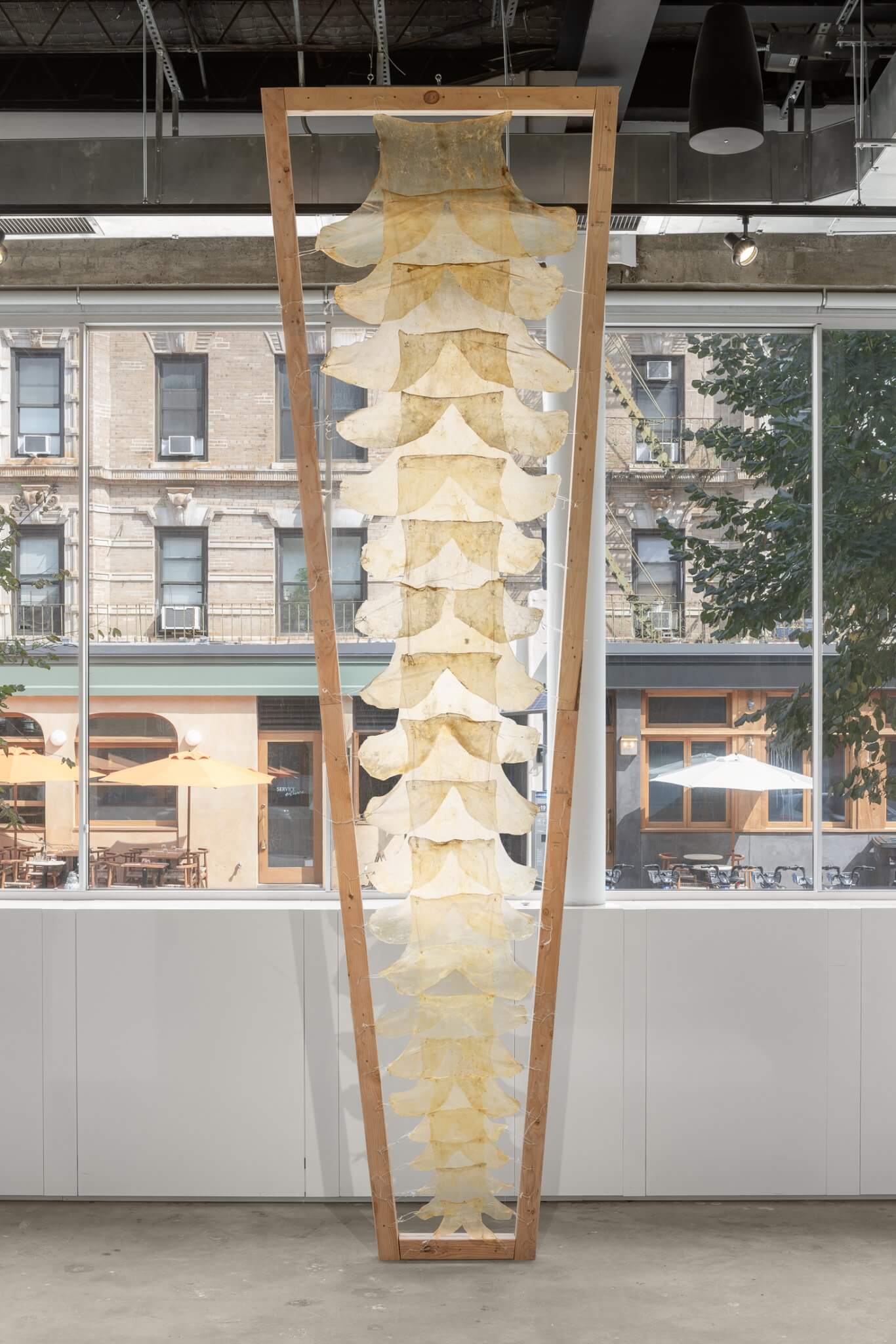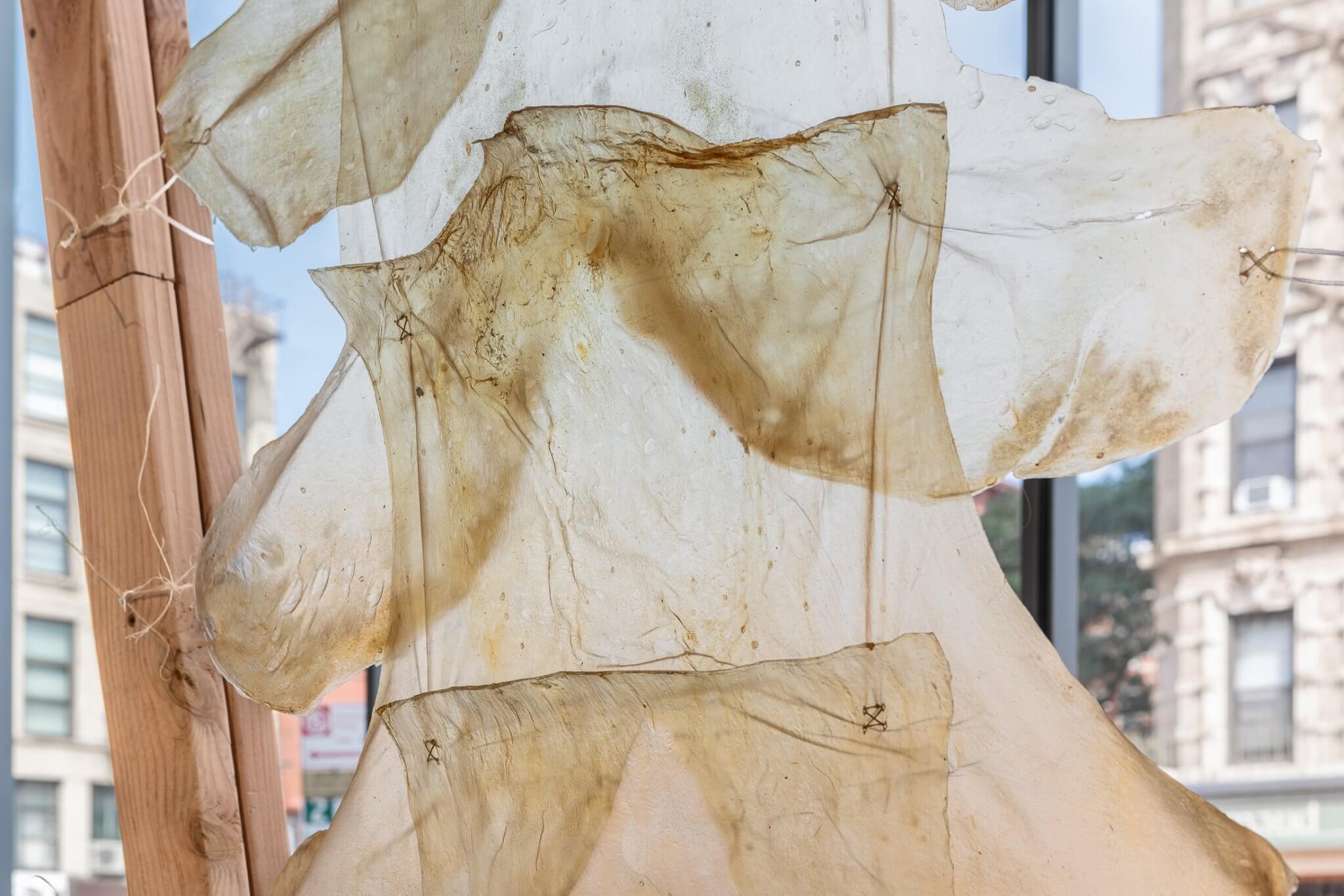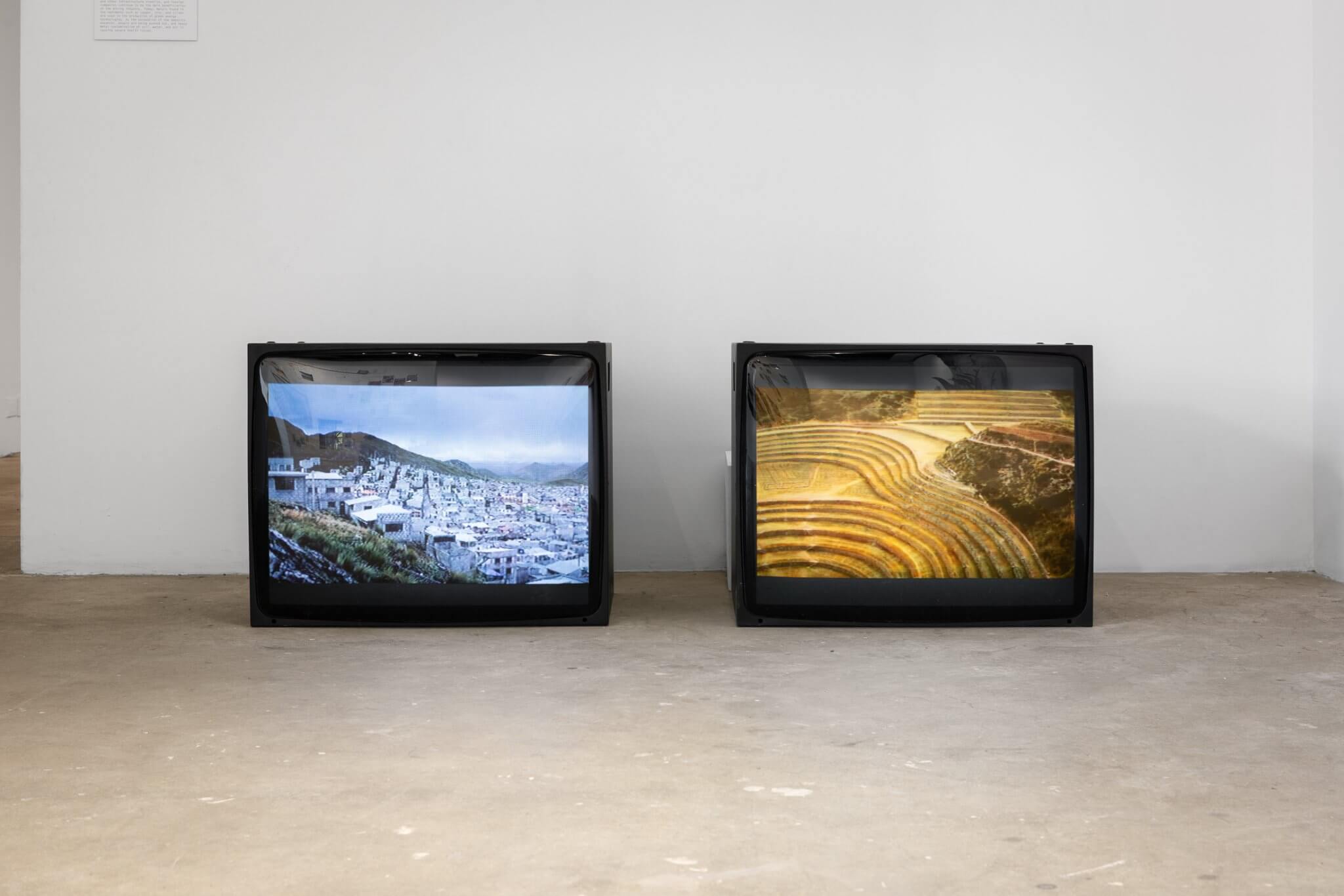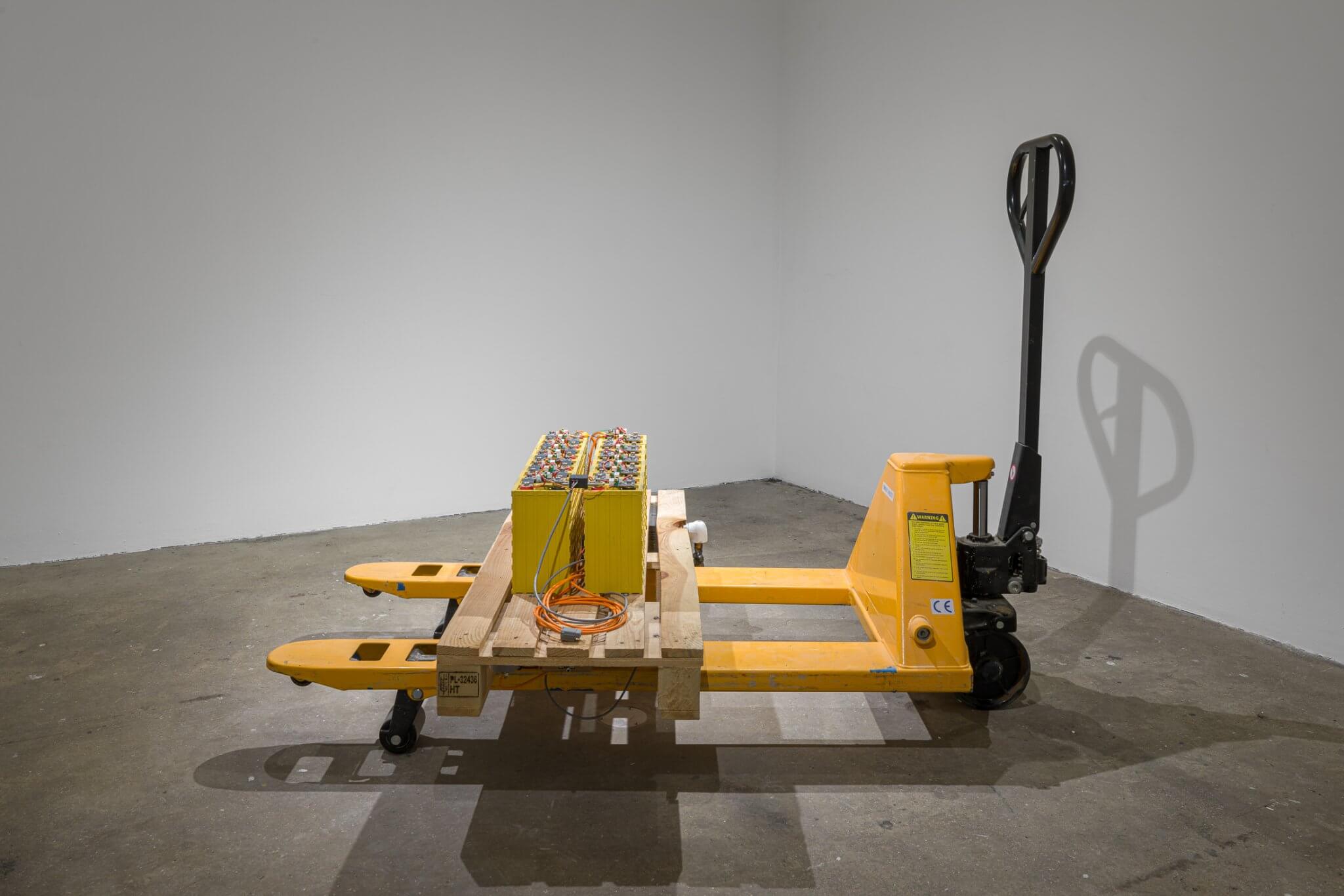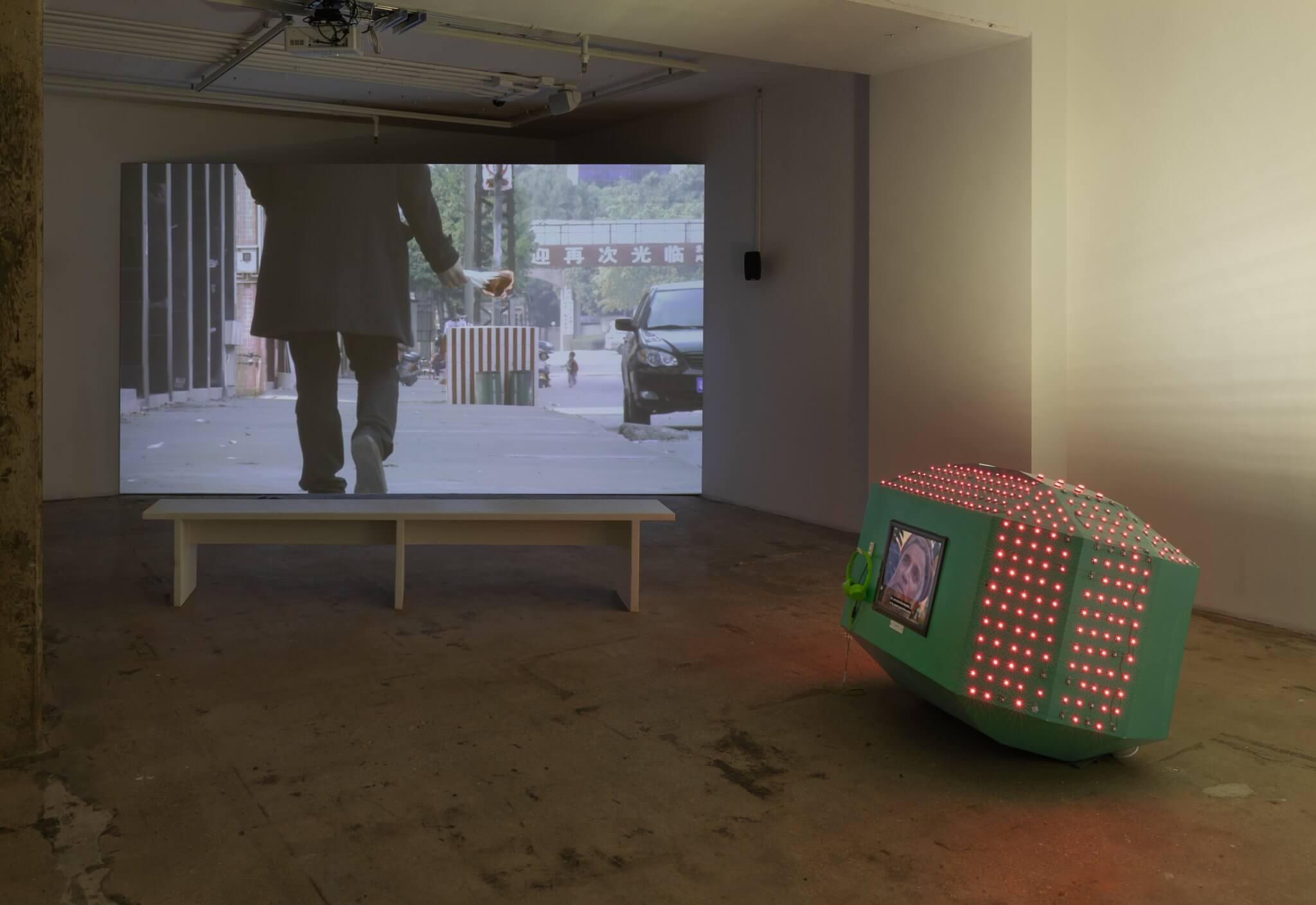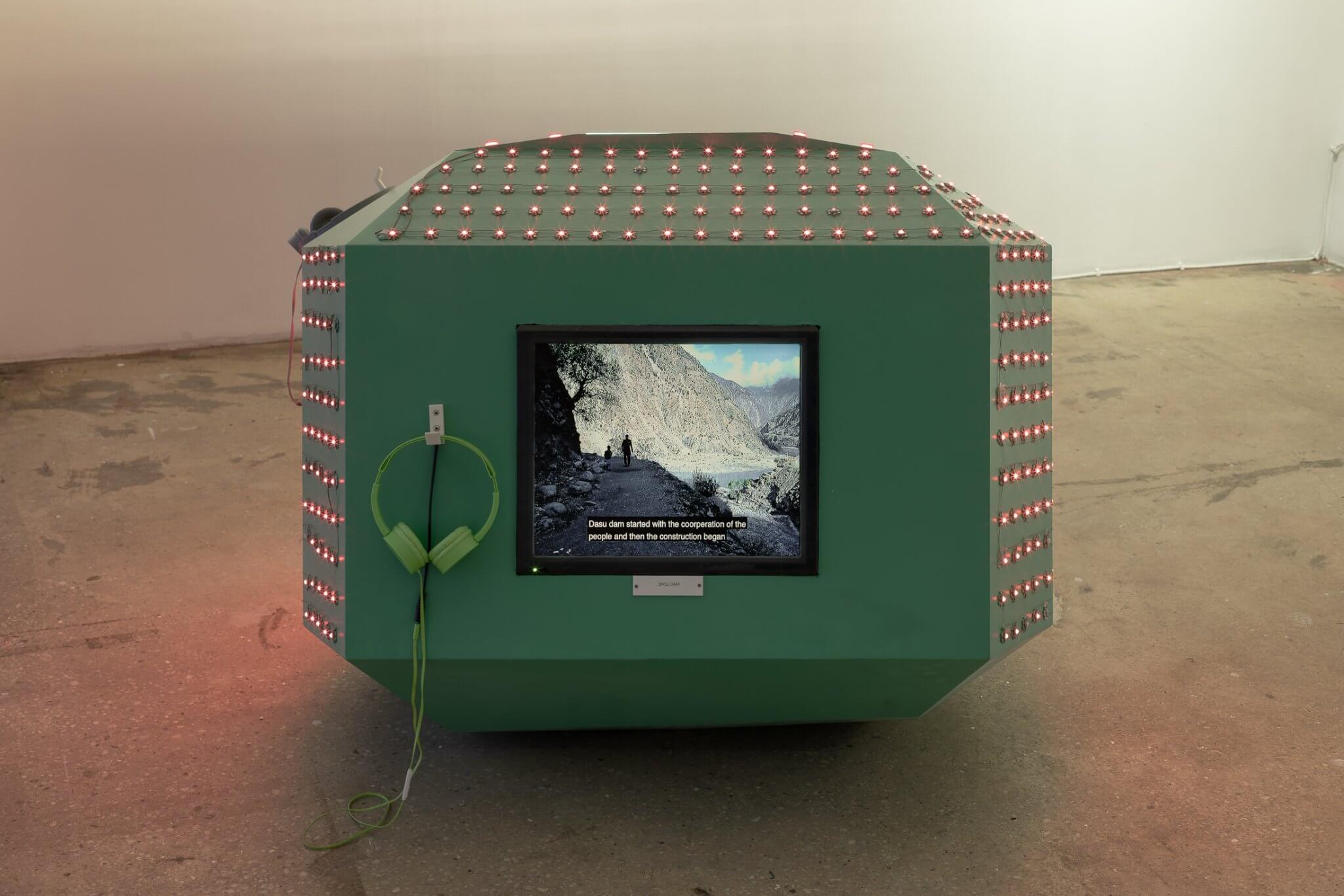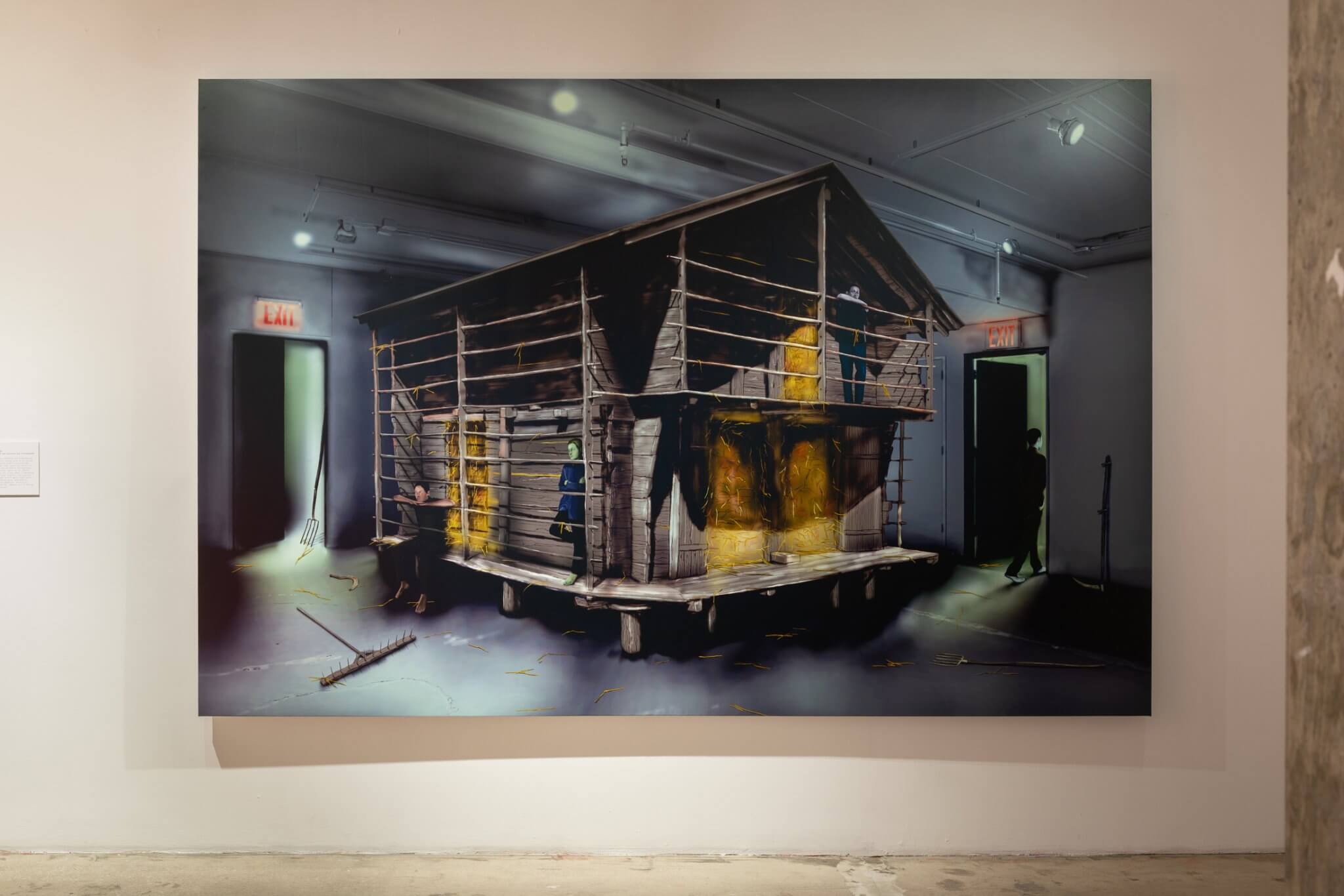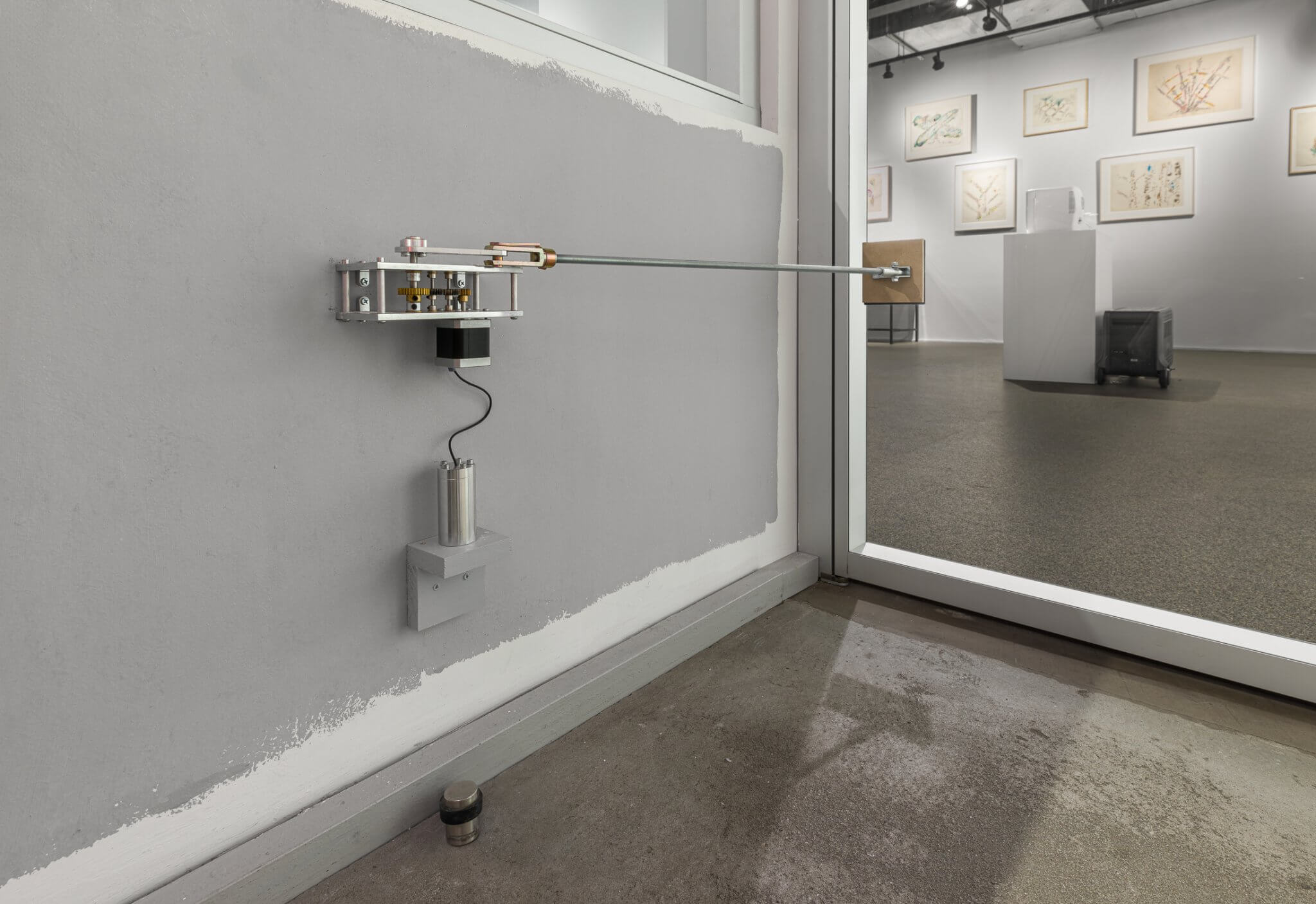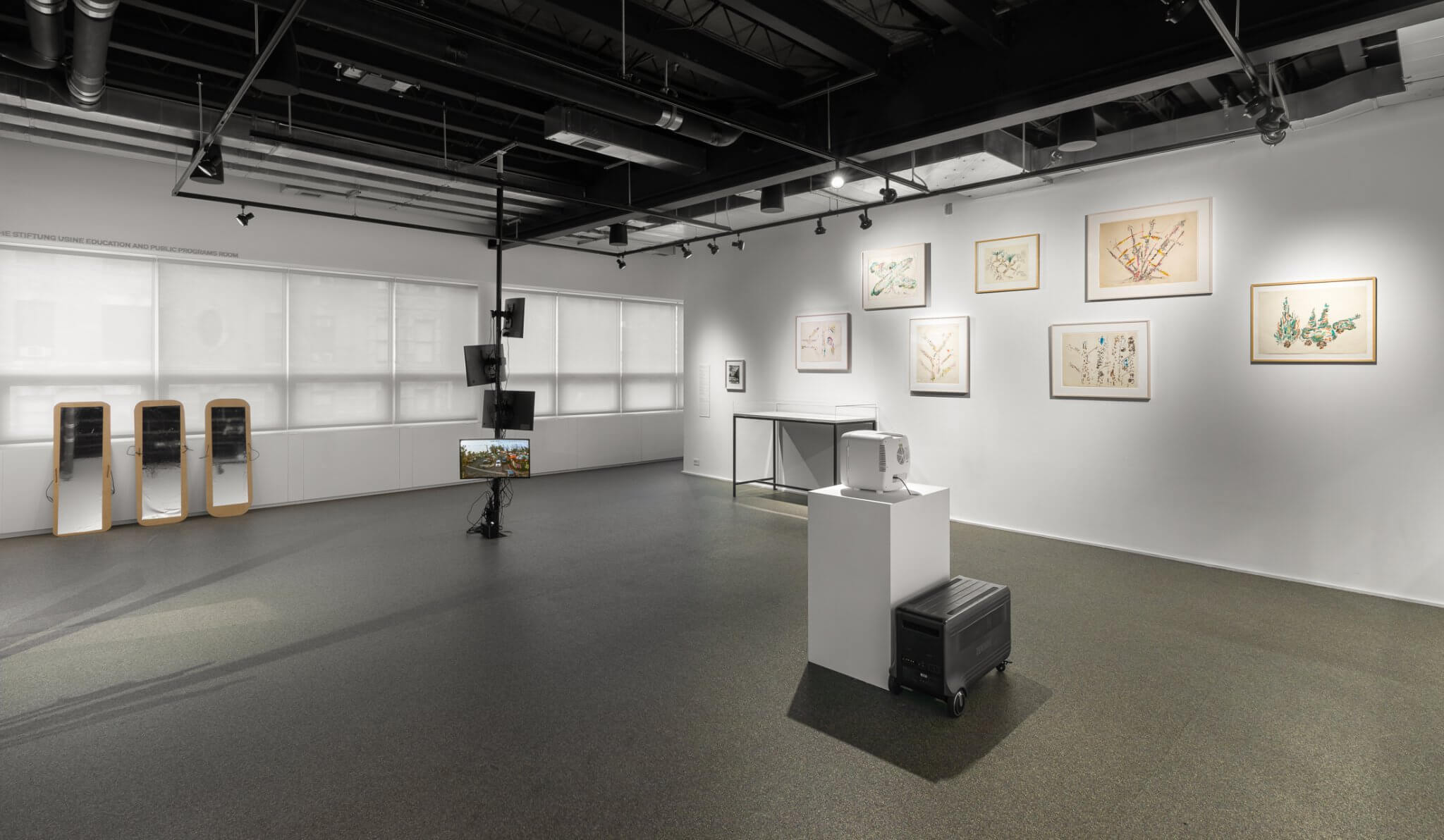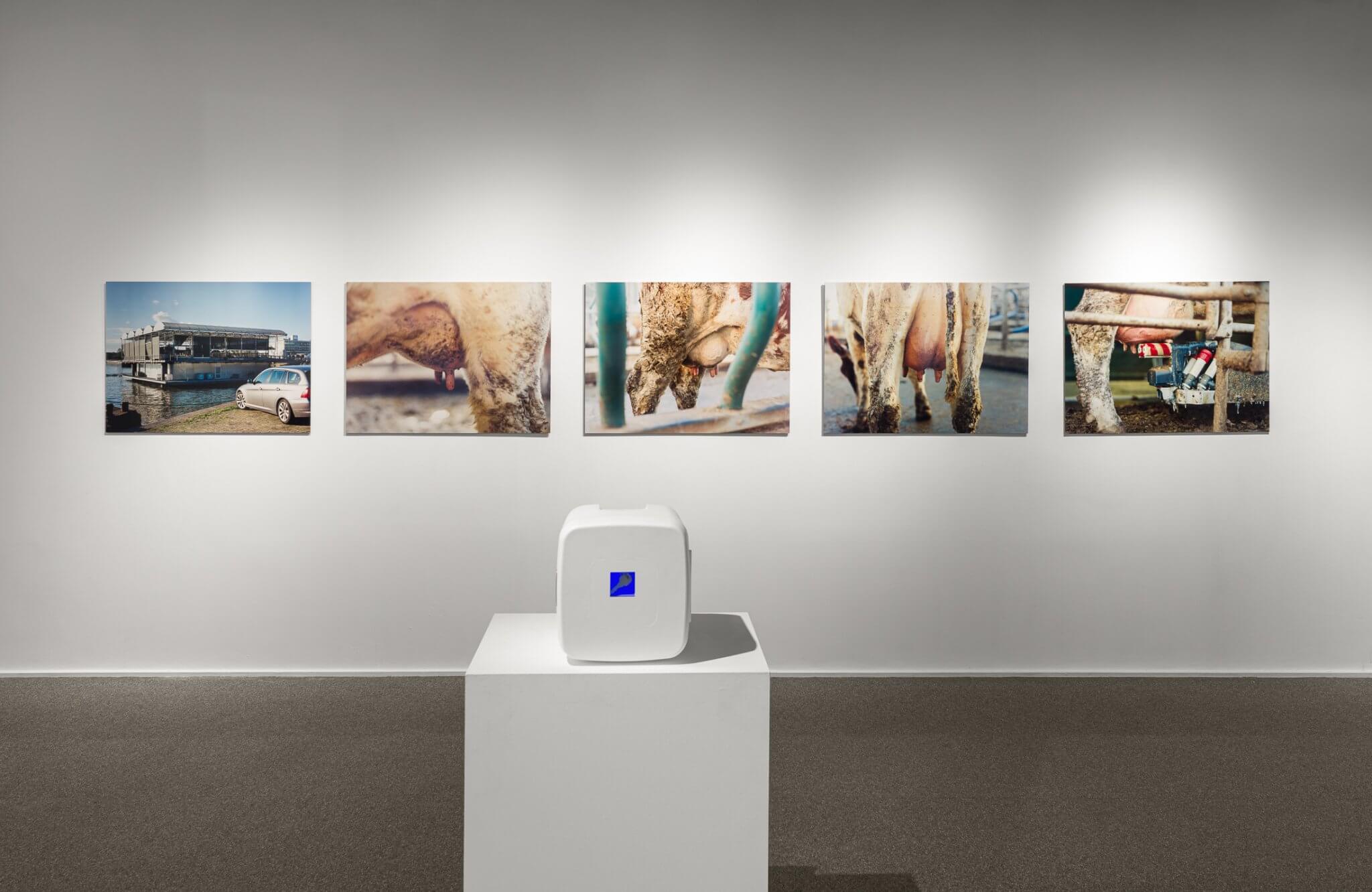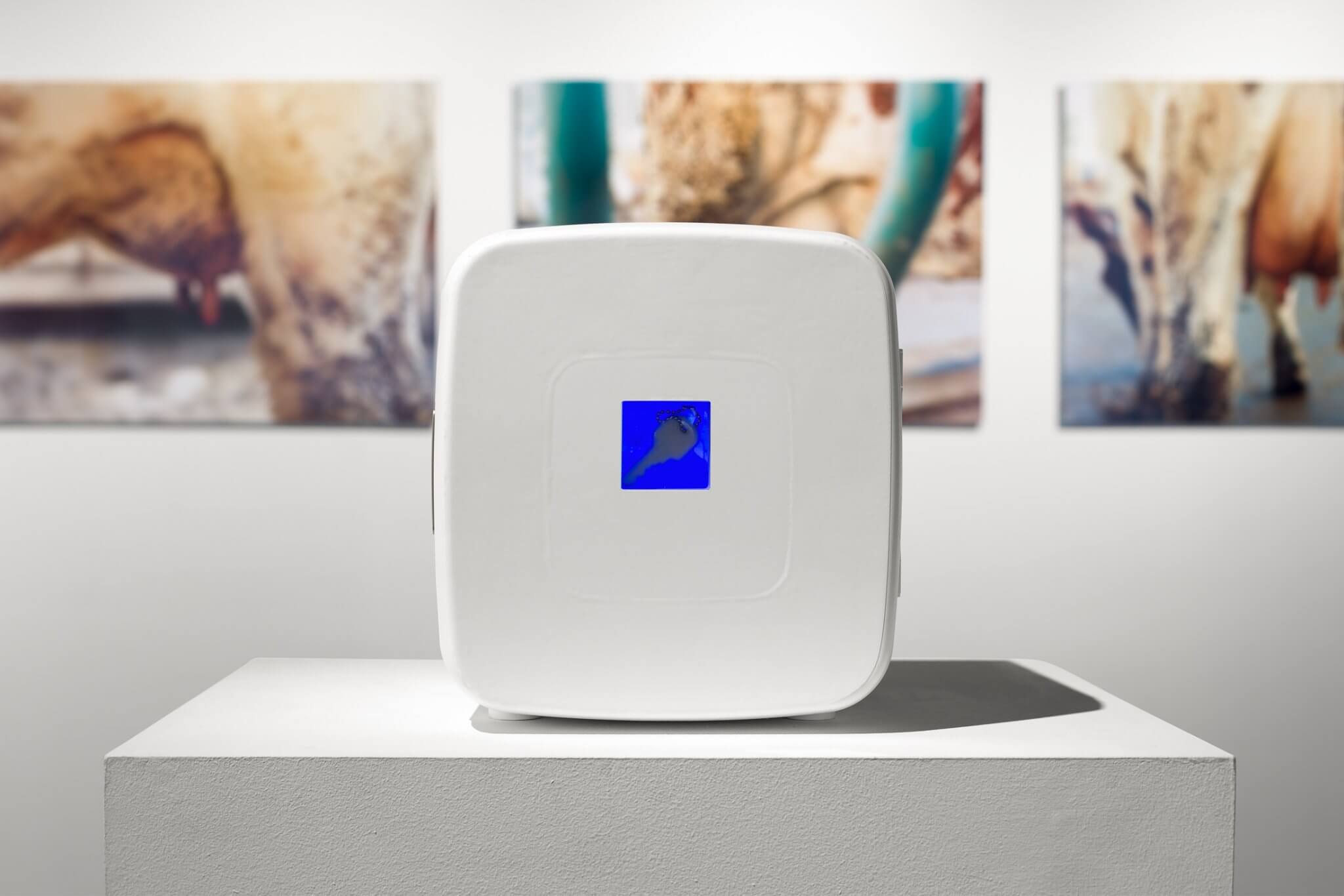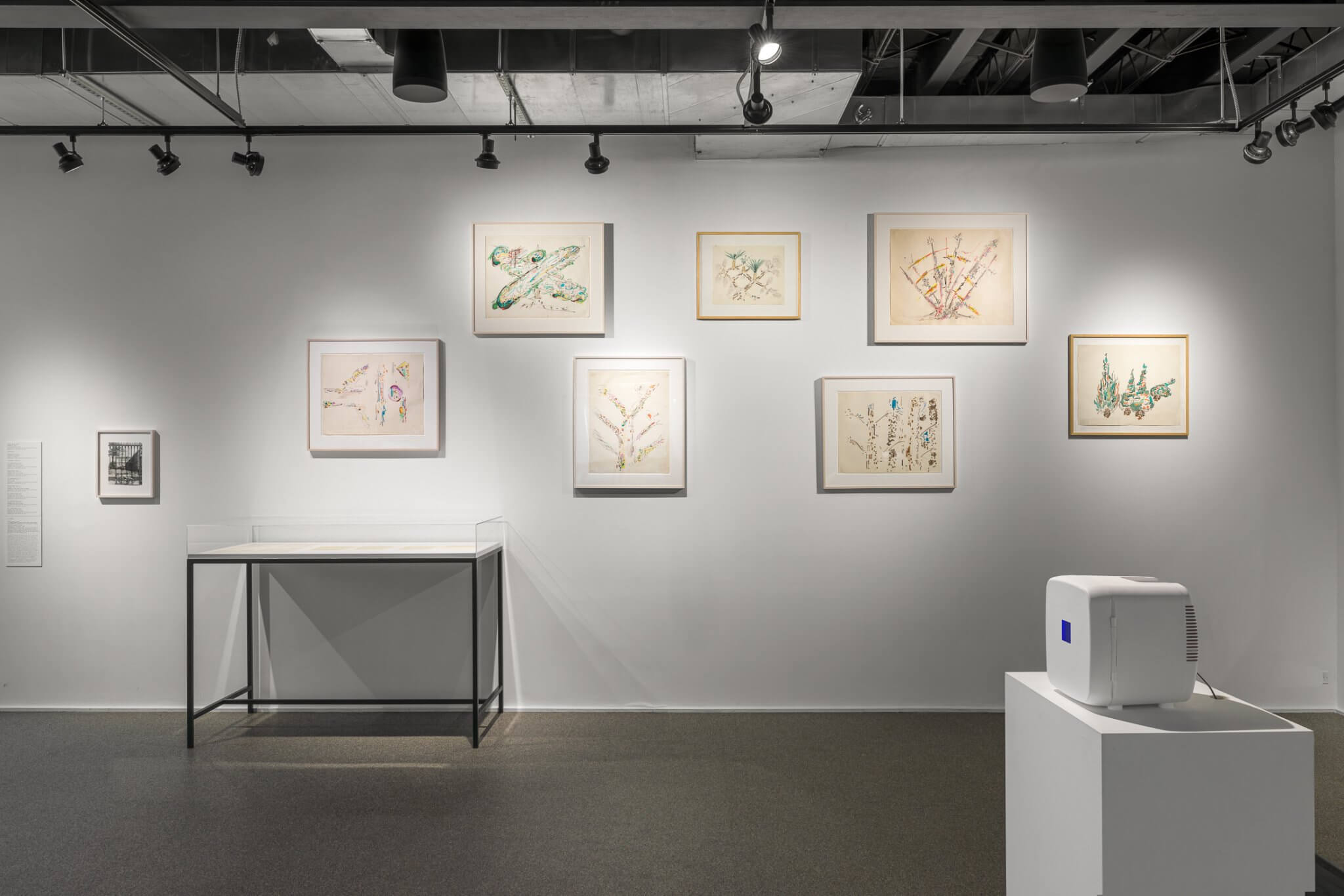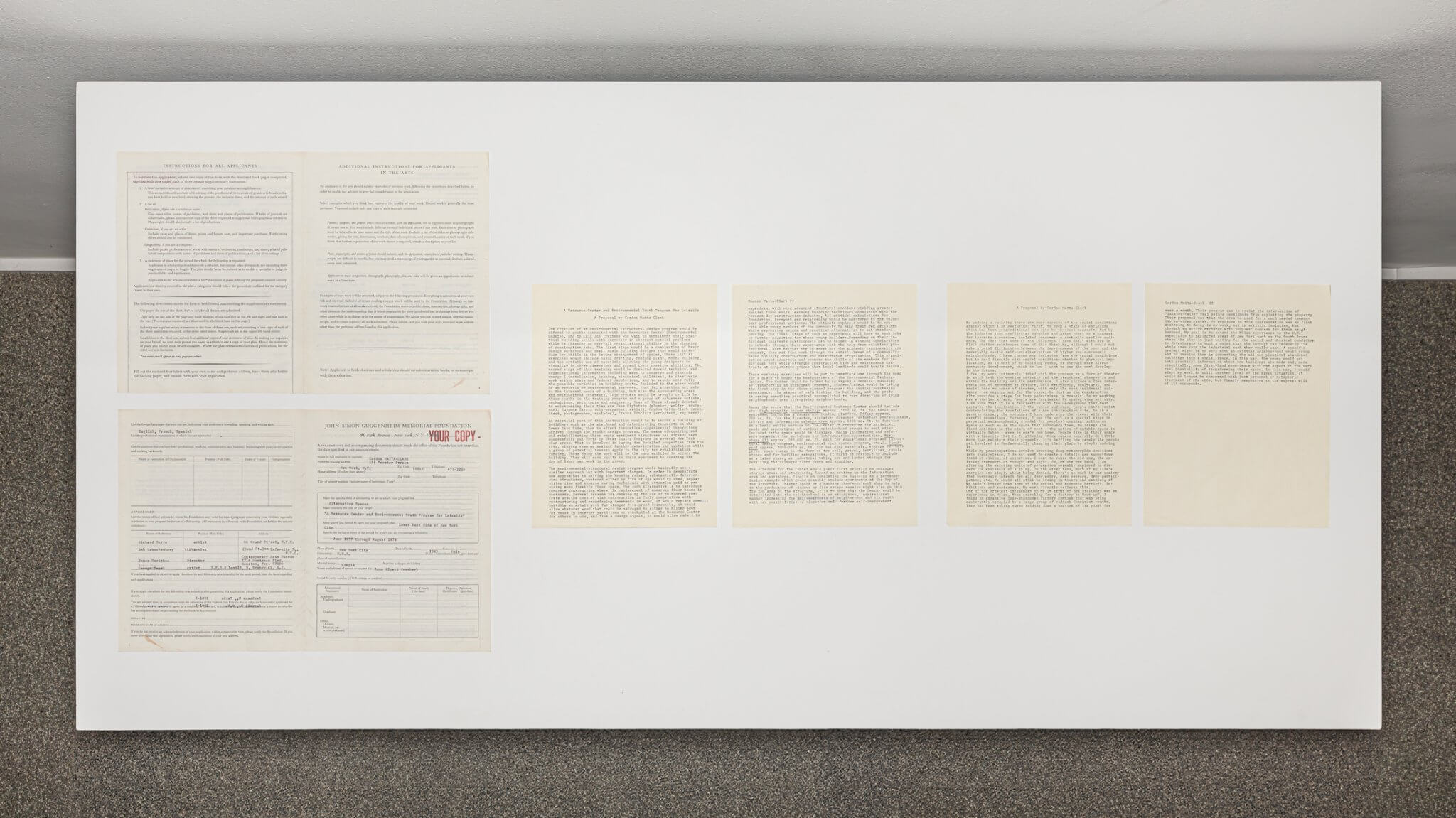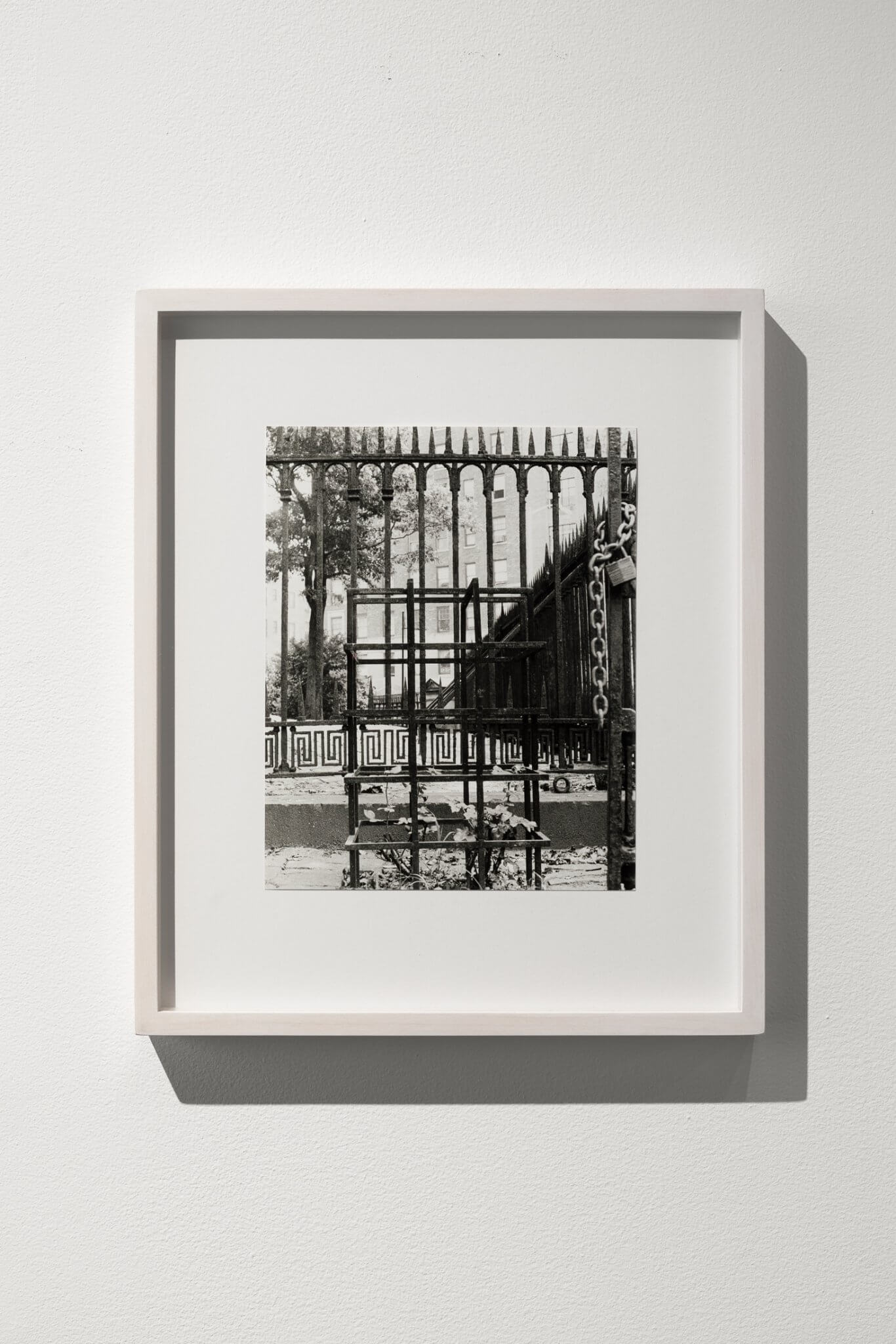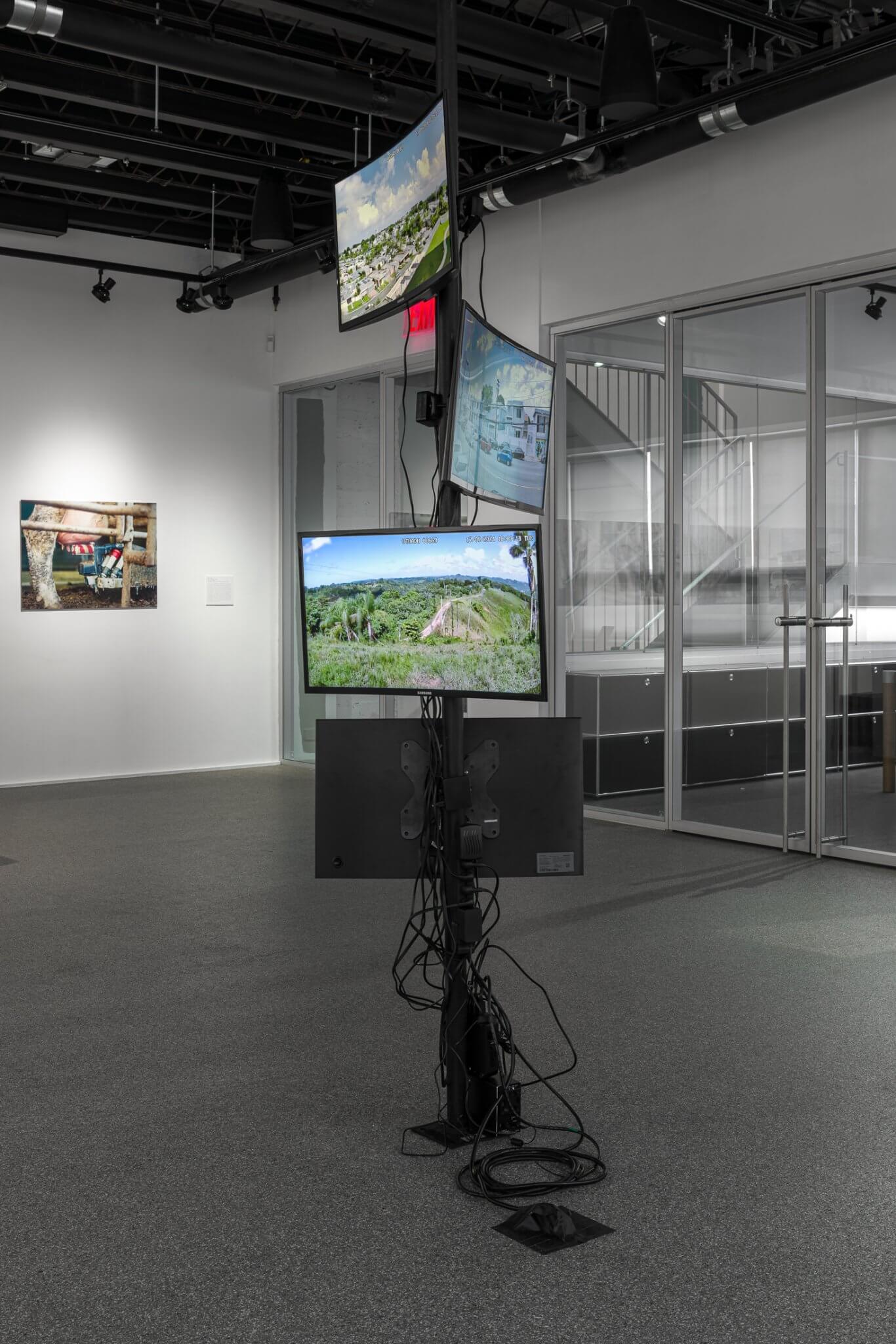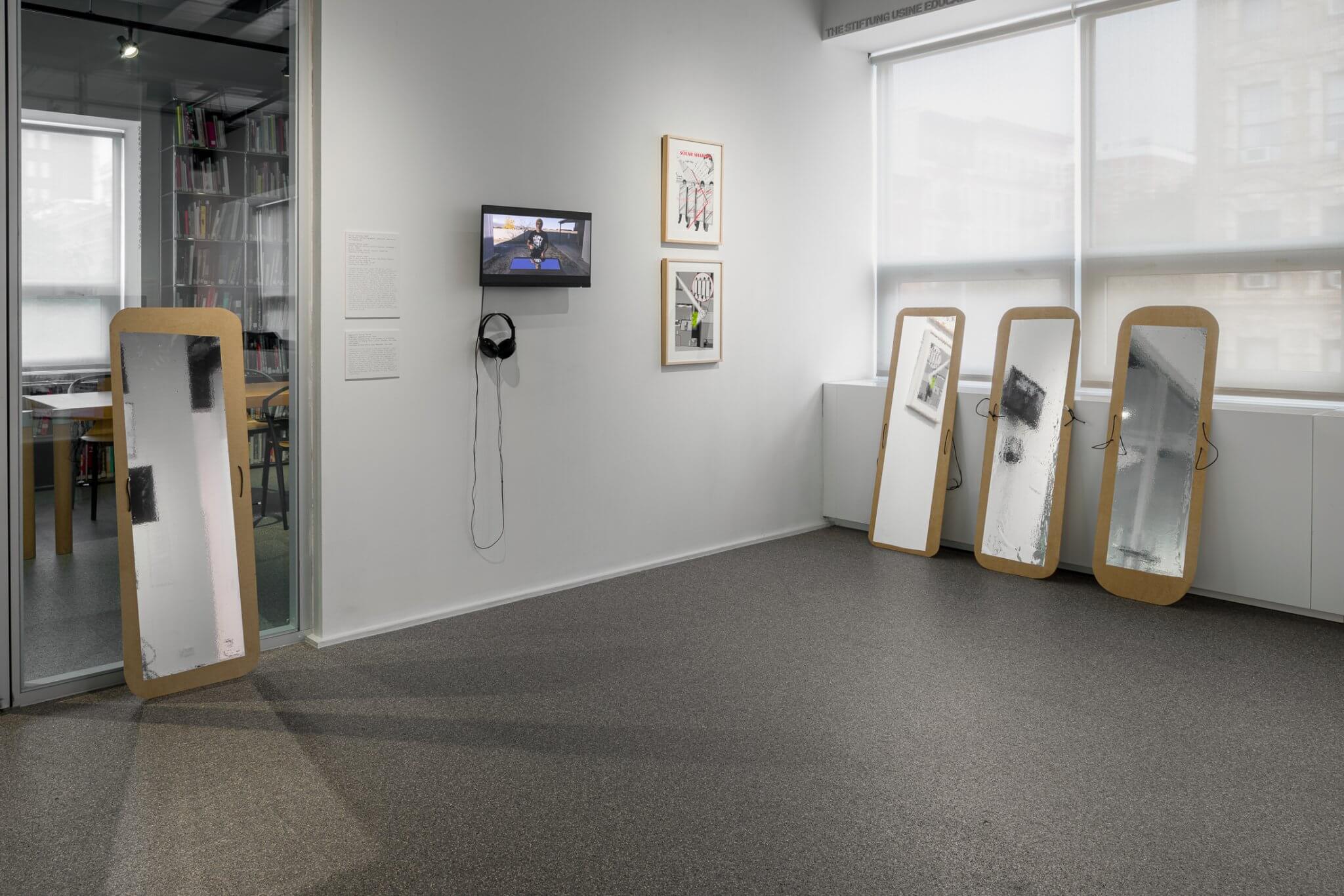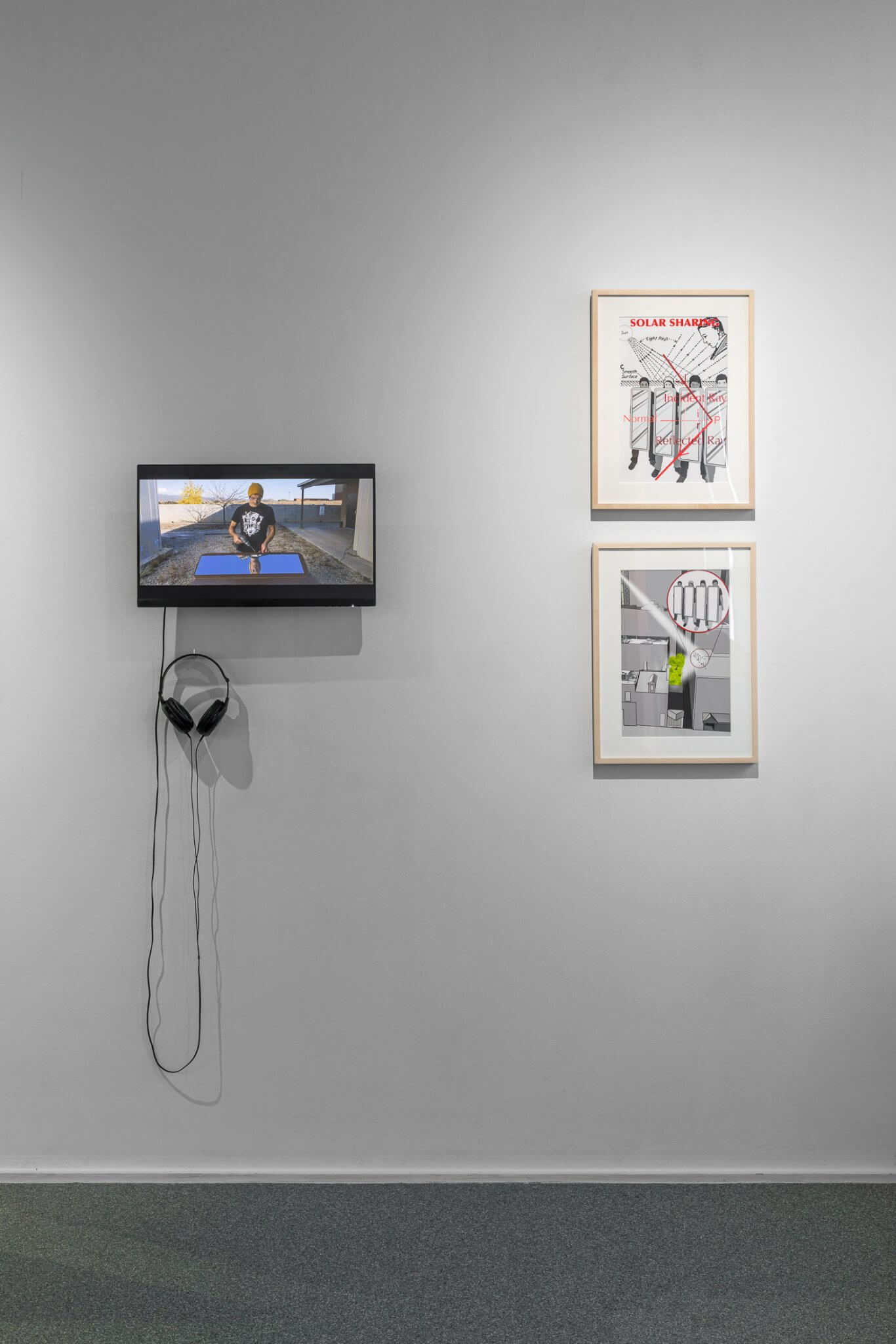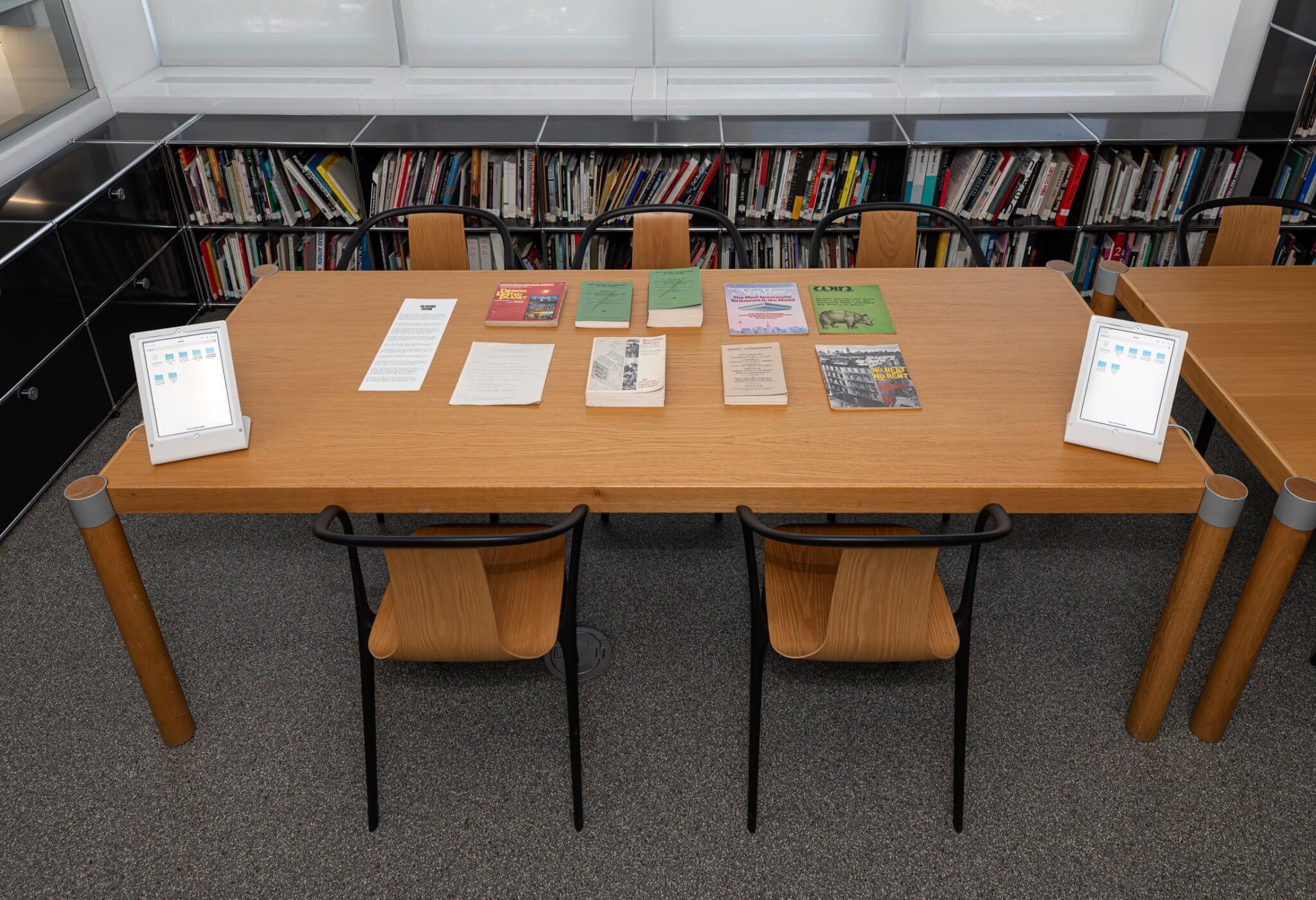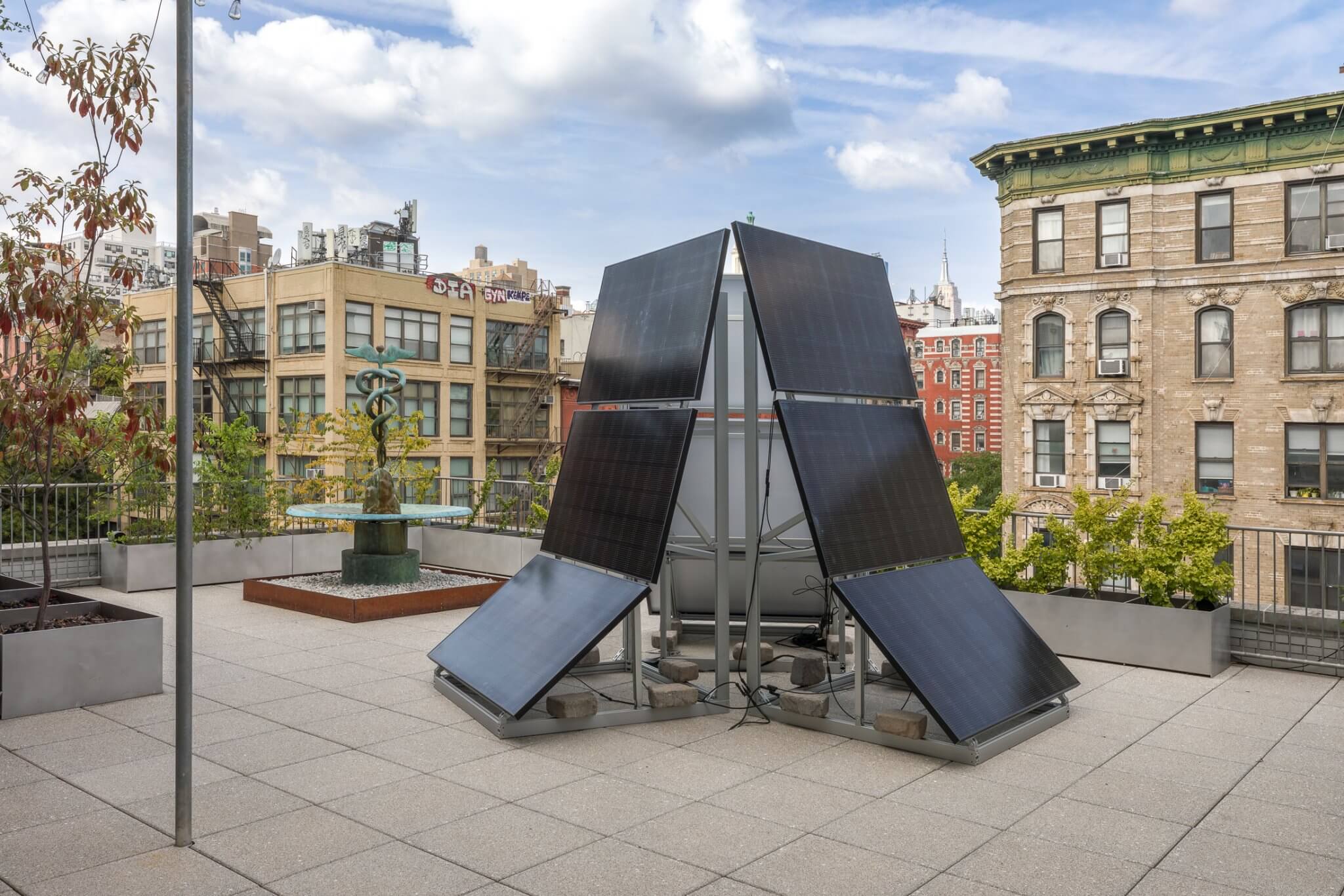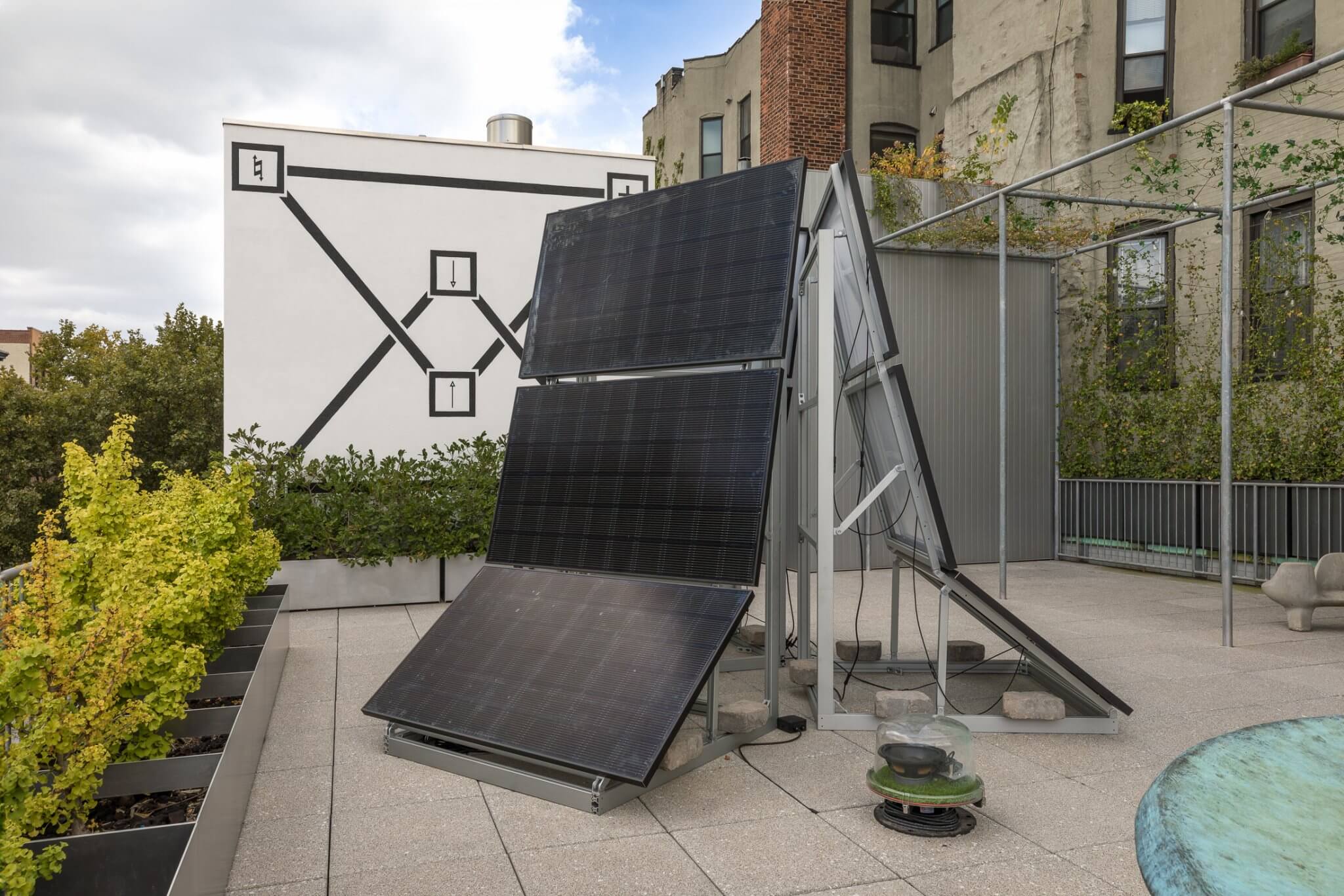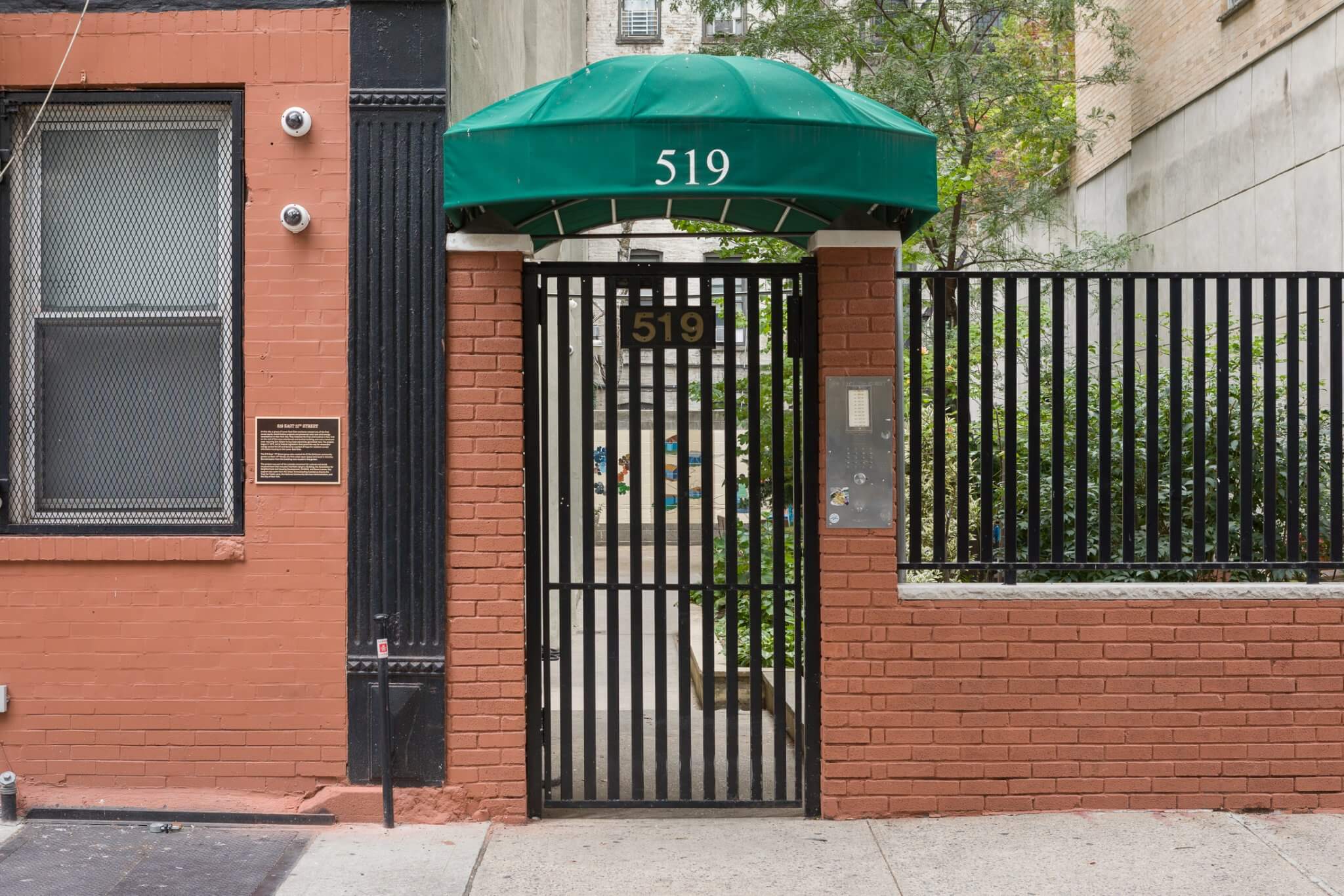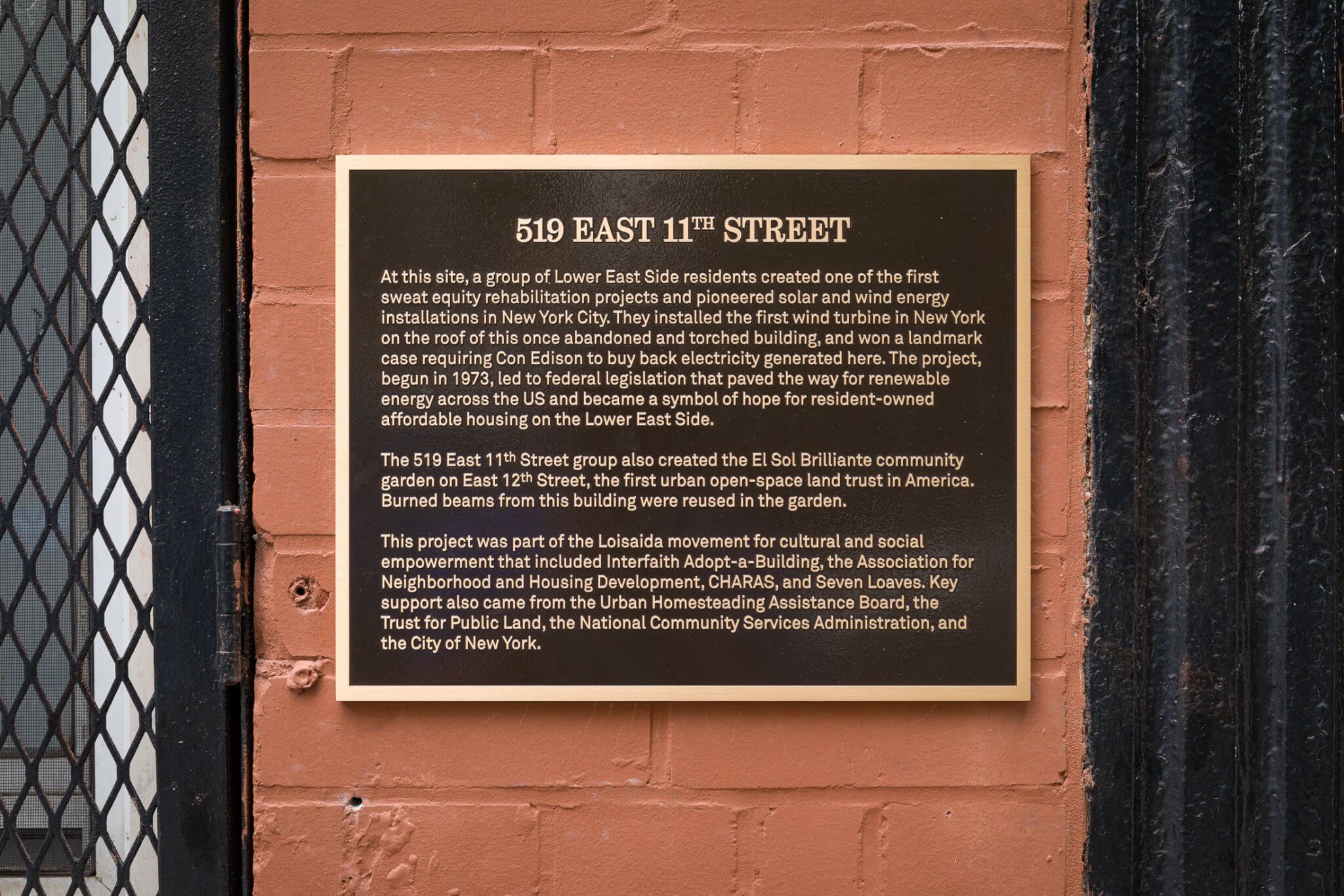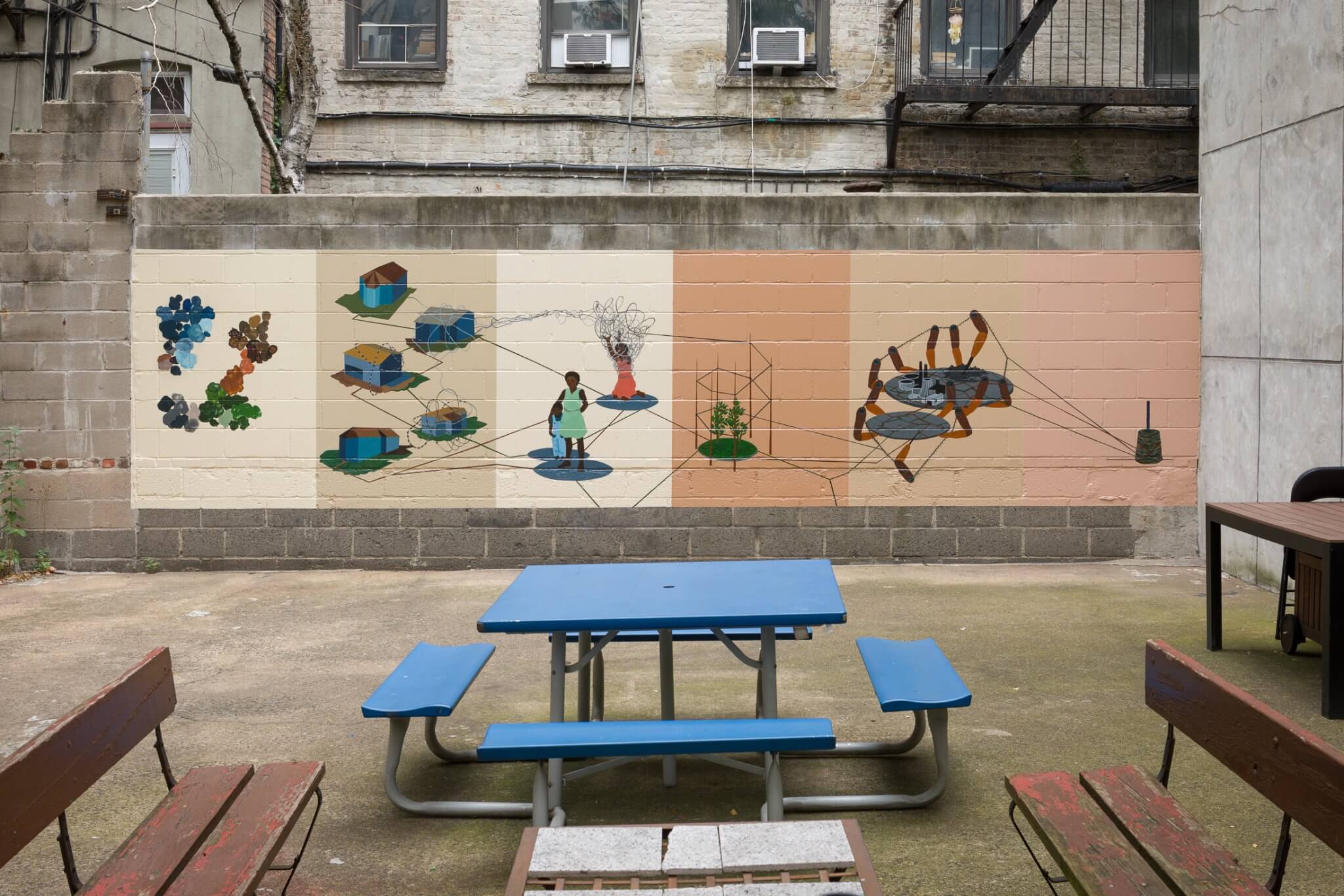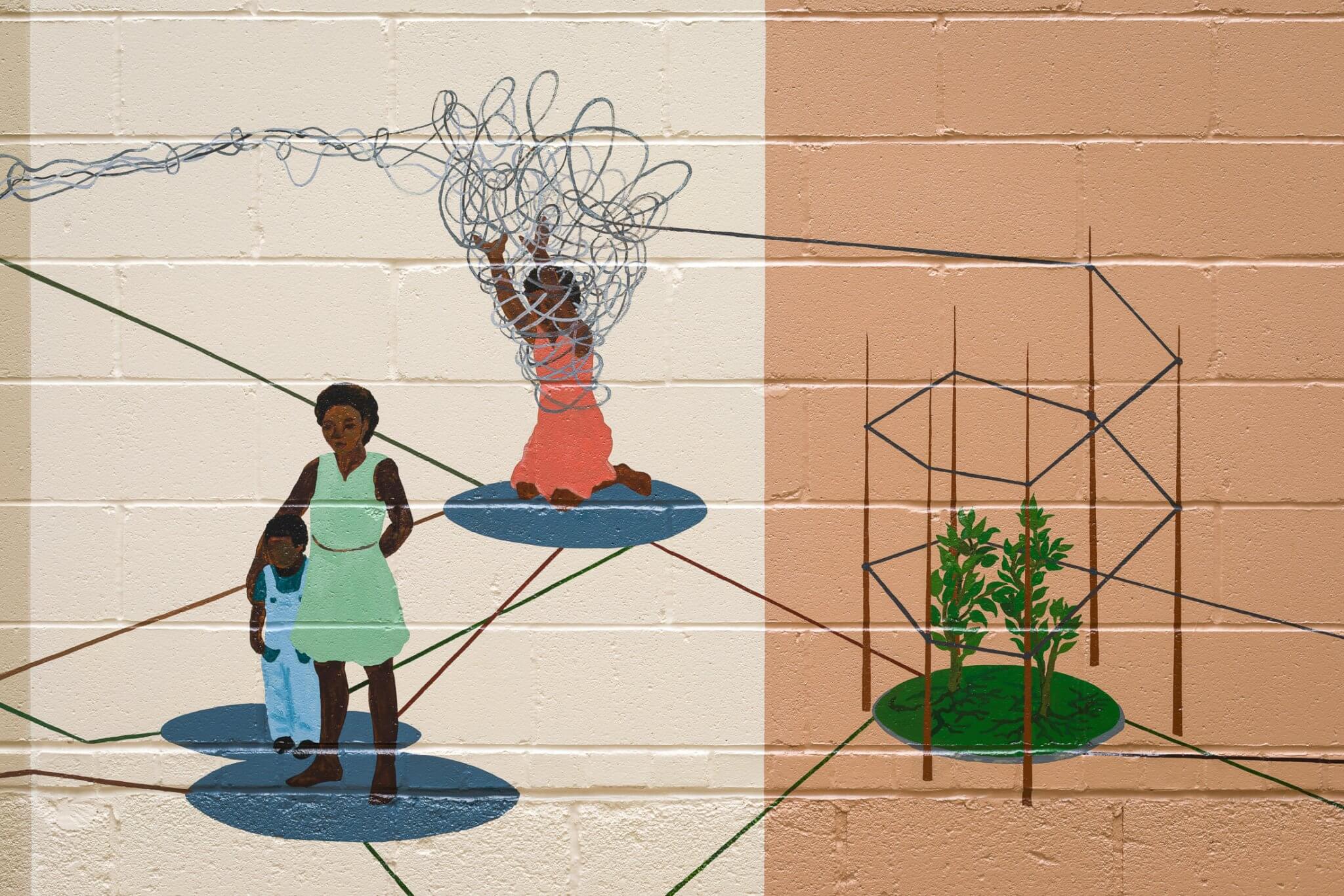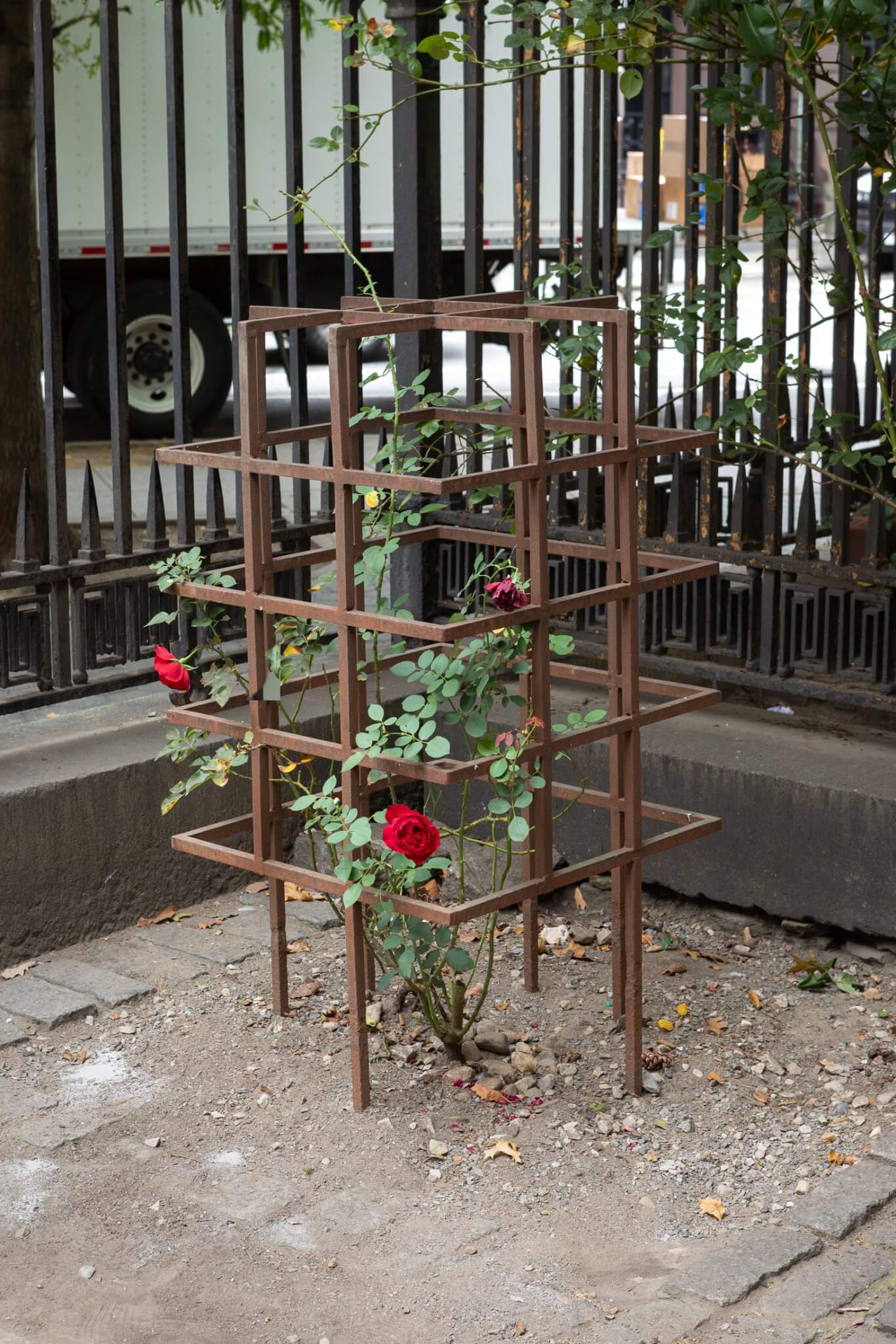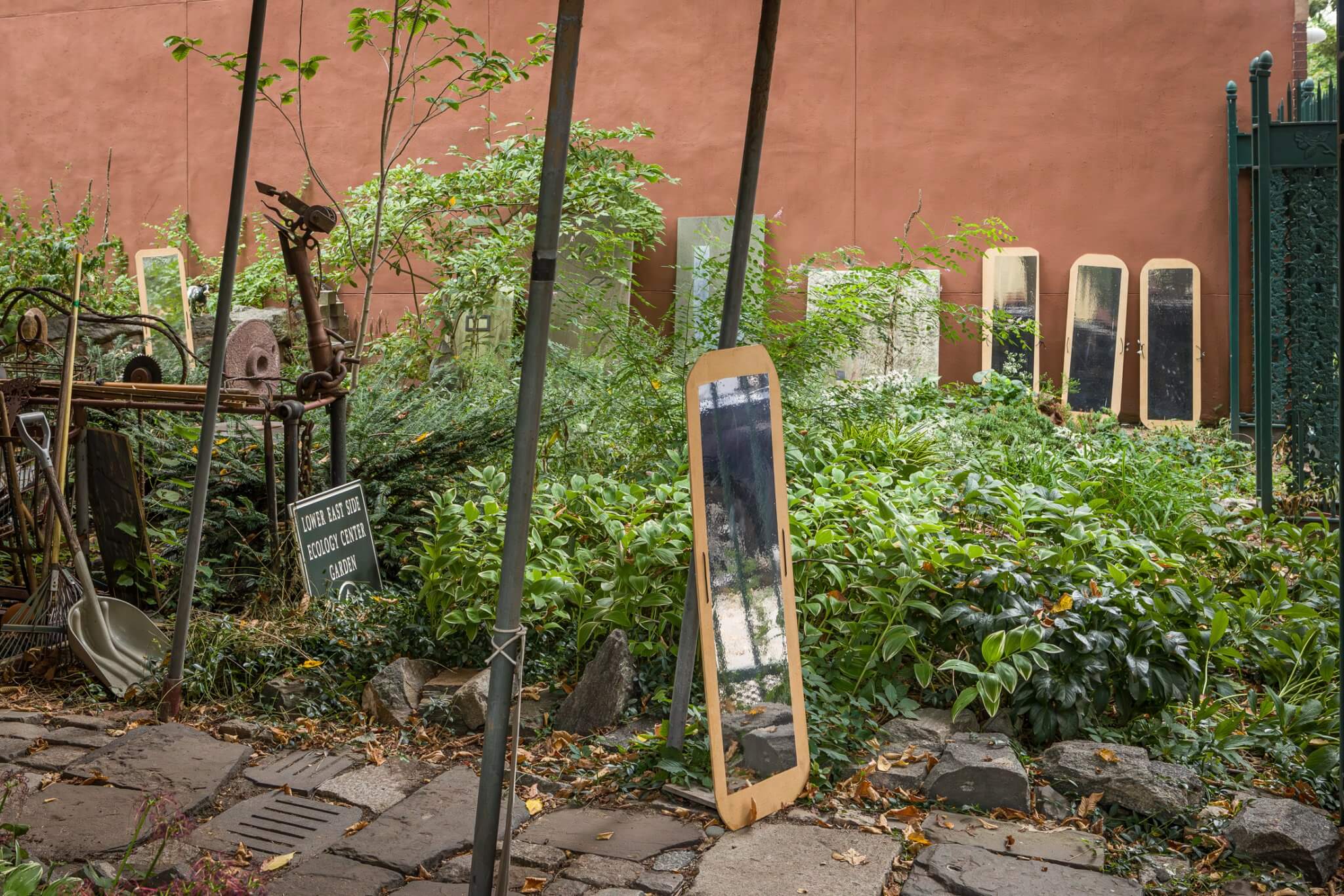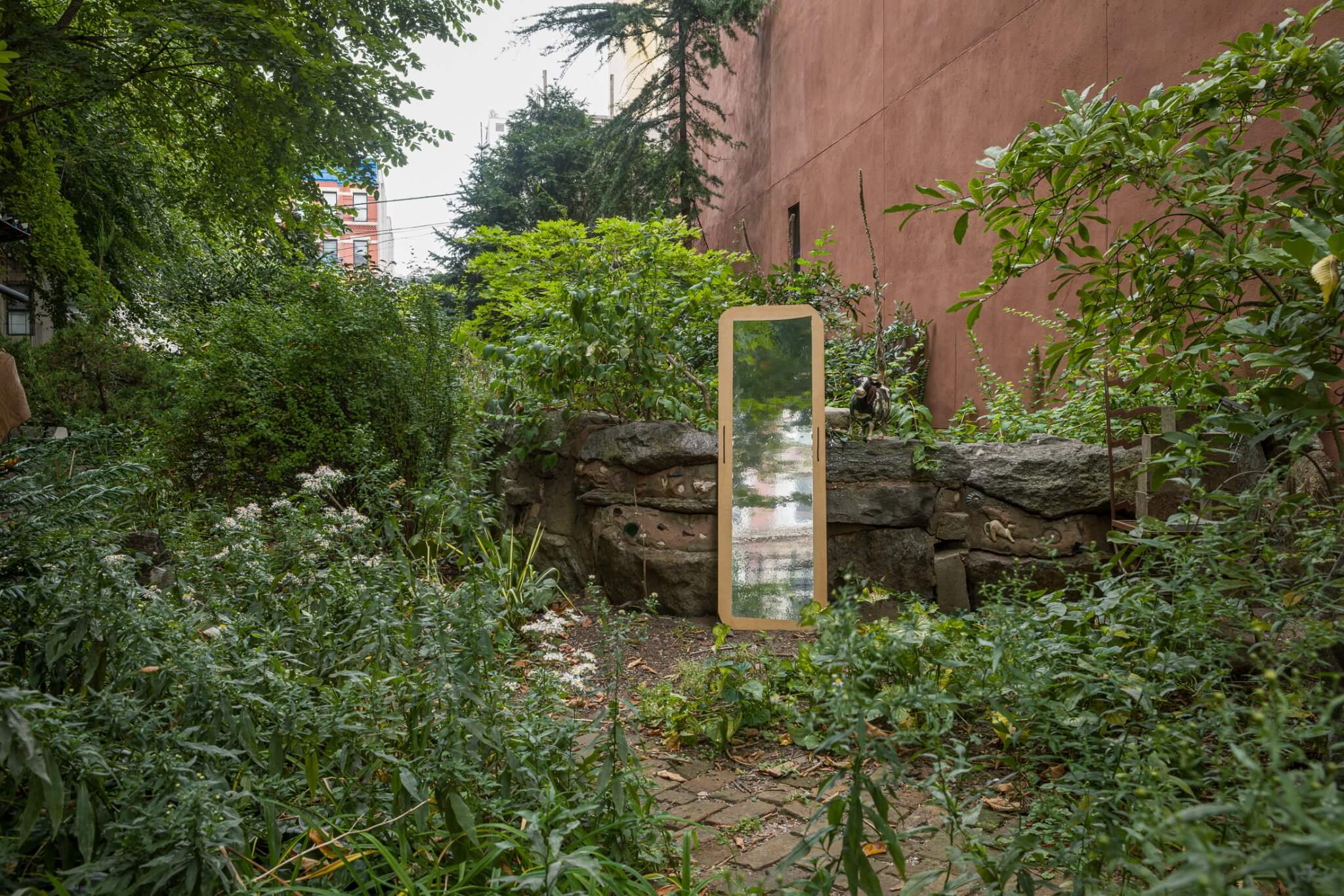Energies
Sep 11 2024 - Jan 05 2025
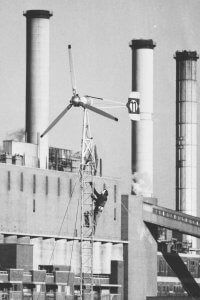
Including works by Ash Arder, Liu Chuang, Gina Folly, Louisa Gagliardi, Ximena Garrido-Lecca, Becky Howland, Jean Katambayi Mukendi, Saba Khan, Agnieszka Kurant, Cannupa Hanska Luger, Vibeke Mascini, Gordon Matta-Clark, Haroon Mirza, Joar Nango, Ruth Nazario, New Affiliates, Otobong Nkanga, Nick Raffel, and Gabriella Torres-Ferrer.
Swiss Institute (SI) presents Energies, an international group exhibition that unfolds throughout the entire building at 38 St Marks Pl and expands into numerous partner locations in the surrounding East Village community. The exhibition includes influential historic artworks alongside contemporary positions and new commissions that address ecological affordances and effects, social formations, and political arrangements attached to energy past and present.
A largely forgotten yet influential piece of neighborhood history forms the starting point for the show. During the oil crisis in 1973, inhabitants of one of the first sweat equity co-ops, located at 519 E 11th Street, installed a landmark two-kilowatt wind turbine on the roof of their torched building. This machine generated electricity and supplied the community with light during the many power cuts in the city at the time, even supplying the residents with light during the great outage of 1977. Paired with solar panels and insulation efforts, it was one of the first in the nation to feed electricity back into the grid, much to the consternation of the largest and near-monopoly utility provider, Con Edison, who retaliated with a major lawsuit. Receiving unexpected support from a former Attorney General, the co-op improbably won the case, which changed US energy regulations forever by mandating that utilities providers accept decentrally generated energy. This little-known, community-driven history thus helped usher in subsequent revolutionary, albeit flawed, advances toward cogeneration, conservation, and green and renewable energy production.
In our current moment of ecological crisis marked by record-high rates of carbon emissions, habitat destruction through fossil fuel extraction, infrastructure disruptions due to extreme weather, competing geopolitical interests, energy poverty, and contentions around green colonialism, Energies explores global issues related to energy through a specific lens rooted in local history. Through artistic perspectives, the exhibition expands outward from the 1970s East Village wind and solar array, looking at this small-scale historical model that collectively led to major change, to imagine cautiously optimistic, community-driven energy futures.
A wall built from discarded architectural elements sourced from exhibitions across the city, devised by New Affiliates, serves as the base for archival material gathered during an extensive research period, undertaken together with many of the individuals involved in the original sweat equity co-op at 519 E 11th Street. This includes photographs, film, legal documents, and a painting of the community by Ruth Nazario—an artist, a resident in the building, and a central figure in the neighborhood at that time. A cutout in the wall also houses Nick Raffel’s balsa wood fan, self-reflexively making visible and aiding the air flow throughout SI’s building. Installed nearby is a wall sculpture, Oil Tankers on Fire, and three watercolors of energy infrastructure combined with weeds, by Becky Howland. Howland is a cofounder of ABC No Rio, a collectively run community art and activism center on New York’s Lower East Side, for which she designed the poster featured here, for activities in and around her sculptural installation entitled Brainwash (1982).
In the same gallery, Jean Katambayi Mukendi’s Afrolampe drawings and sculpture tend to global structural inequities in the extraction of copper for the production of renewable energy technologies in Lubumbashi, DRC, where resources are abundant but power cuts are common. Similarly, Ximena Garrido-Lecca’s two-channel video, filmed in Cerro de Pasco, Peru, shows the scars that mining enabled through US-supported infrastructure left in the landscape—an industry that continues to seriously affect the health of the community living in one of the most contaminated places in the world. On view in the small gallery is a new iteration of Vibeke Mascini’s installation Instar. The work consists of a battery charged with the energy derived from the ashes of confiscated and incinerated cocaine. The unit powers a nebulizer which releases a scented essence based on ozone, an adrenaline-inducing smell resembling that of the air when lightning is about to strike. Set against a view of St Marks Pl, Joar Nango’s installation reinvents windows made by Sámi communities from stretched halibut stomachs, an Indigenous technology utilizing the material’s insulating properties and translucency.
In the lower-level gallery, Louisa Gagliardi’s digitally rendered painting of an ambiguously glowing hay shed imagined within the space it is exhibited in, inhabited by four characters along with rakes and sickles strewn about, connects parochial pasts with digital futures. Facing the work is Liu Chuang’s video grappling with the rapid development, changing economies, and recent decline of industry in China juxtaposed with fire as one of the most ancient forms of energy harnessed by humans. Nearby, Saba Khan’s sculpture replicates the retro-futuristic shapes of hydropower plants installed with the support of the World Bank in the 1960s in post-partition Pakistan, addressing geopolitical implications of energy access.
On SI’s rooftop terrace, in the communal spirit of the 519 E 11th Street co-op, Haroon Mirza has created a solar panel installation that provides electrical charge for a sound piece by the artist as well as Ash Arder’s new installation on the second floor, comprising a fridge housing a sculpture made from perishable, culturally symbolic material. In accessing the second floor, visitors activate Agnieszka Kurant’s installation Living Currency, which turns the energy burnt by viewers as they open the door from kinetic into electrical energy stored in a battery. On view in the gallery is Gabriella Torres-Ferrer’s newly commissioned video installation transmitting live footage from four sites in Puerto Rico, whose infrastructure was devastated by Hurricane Maria in 2017. The cameras turn off and the broadcast is interrupted when the still frequent power outages occur. Nearby, Gina Folly’s simultaneously utopian and dystopian photographs document a floating solar-powered platform housing cows for milk production in the port of Rotterdam, addressing food, sustenance, and urban planning.
The exhibition sprawls from SI into the East Village, sending metaphoric electric impulses through the neighborhood. Departing from SI, where a selection of Gordon Matta-Clark’s Energy Tree drawings and an original copy of his Guggenheim Foundation proposal for “A Resource Center and Environmental Youth Program for Loisaida” are presented, in the yard of St. Mark’s Church in-the-Bowery the artist’s Rosebush (1972) has been replanted at its original site, on the occasion of the exhibition. Nearby, in the yard of the co-op at 519 E 11th Street, whose wind turbine and solar panels inspired the exhibition, a new mural by Otobong Nkanga has been installed in close collaboration with the community. Titled Social Consequences I: Segregation – Encroaching Barricade – Entangled – Endangered Species – Rationed Measures – Intertwined, the painting weaves together social and ecological relations as well as concerns regarding production, housing, and access, and will remain on long-term view. Mirror shields built in a community workshop by Cannupa Hanska Luger, akin to those the artist made for use by the water protectors at Standing Rock in 2016, are on view at SI as well as in the Lower East Side Ecology Center’s garden on E 7th Street. Energies also incorporates two independent exhibitions, at the Museum of Reclaimed Urban Space, documenting grassroots environmental and housing activism, and the Loisaida Center, showcasing the organization’s Ecolibrium multidisciplinary climate science literacy and environmental justice project.
Throughout the exhibition, a public program comprising community and education workshops, lectures, and panels, a symposium, a film program in partnership with Anthology Film Archives, a poetry and dance focused event with the Poetry Project and Danspace Project, and various other neighborhood activations, will complement the exhibition.
The exhibition is being prepared with conscious steps toward reducing the institution’s negative climate impact. More details can be found in SI’s recently published 8×8 plan.
Energies is made possible through support from the Frankenthaler Climate Initiative of the Helen Frankenthaler Foundation, Teiger Foundation, the Graham Foundation for Advanced Studies in the Fine Arts, the Royal Norwegian Consulate General, Christine and Balz Halter, the Office for Contemporary Art Norway, and the Mondriaan Fund.

The Energies Symposium is made possible in part through support from the Terra Foundation for American Art.
This exhibition is curated by Stefanie Hessler, Director of SI, with Alison Coplan, Chief Curator, KJ Abudu, Assistant Curator, and Clara Prat-Gay, Curatorial Assistant.
Image: Wind Turbine at 519 E 11th Street with Con Edison Power Plant, 1976. Photo courtesy of The News: New York’s Picture Newspaper.
Related Events
- Energies | Reactivation of Gordon Matta-Clark’s Rosebush at St. Mark’s Church in-the-Bowery
- Energies Symposium | Alternative Communities & Energies Past, Present, and Future
- Energies Symposium | Energy in Art with Caroline A. Jones and Jad Atoui
- Energies Symposium | Energy Politics & Green Colonialism with Caleb Wellum, Myles Lennon and Tsēmā Igharas
- Energies Symposium: Energy in Art with Carolyn Christov-Bakargiev and Agnieszka Kurant
- Workshop | How to Build Cannupa Hanska Luger’s Mirror Shield
- Energies | Collective Walking And Mapping For Teens And Young Adults
- Screening | Energies: A Moving Image Convening at Anthology Film Archives
Press
- Energies | Cultured
- Energies | New York Times
- Energies | Observer
- Energies | World-Architects
- Energies | Bomb
- Energies | Frieze
